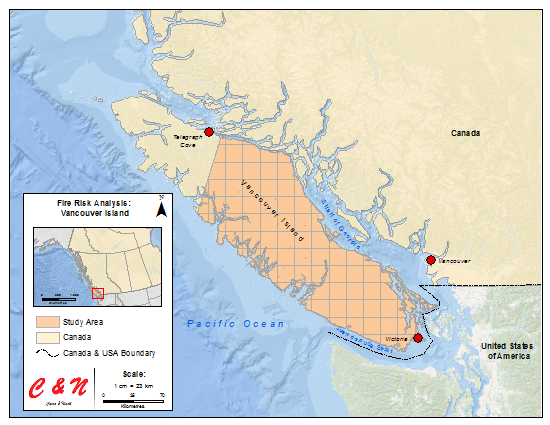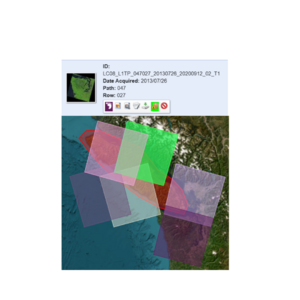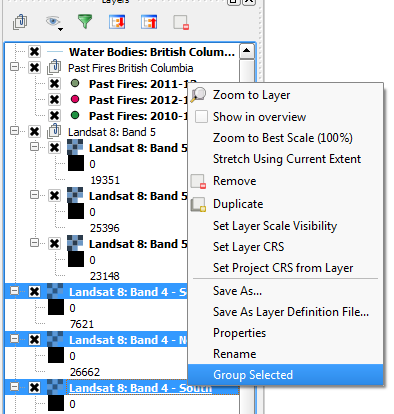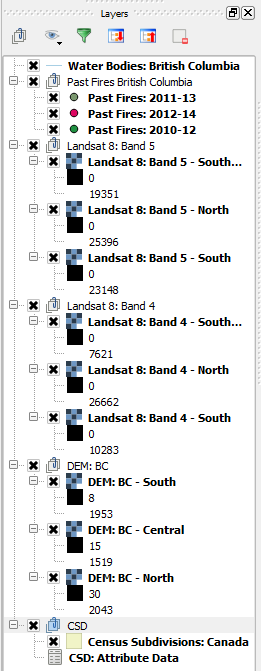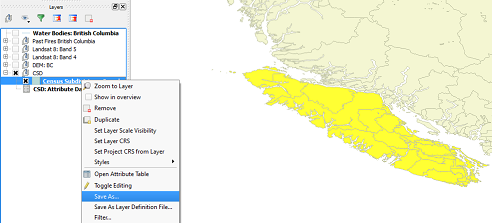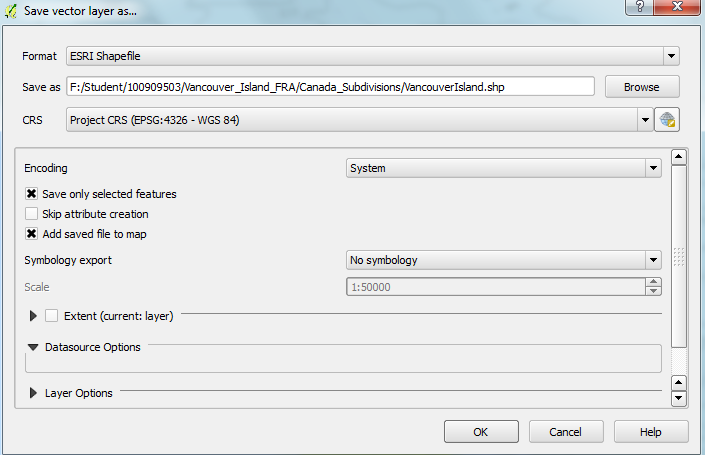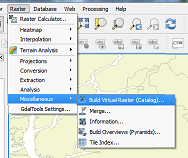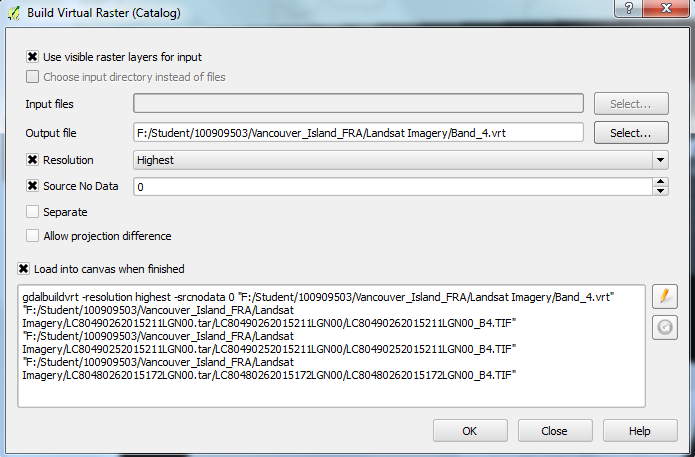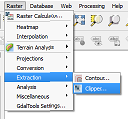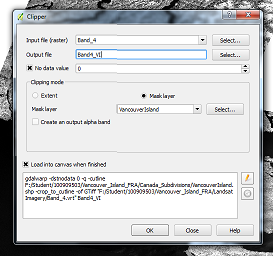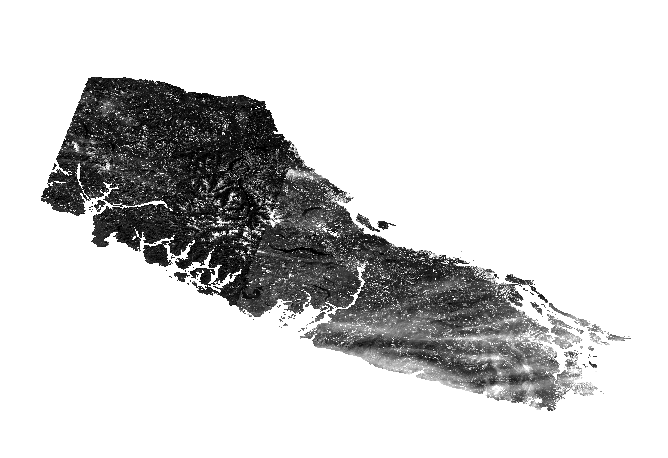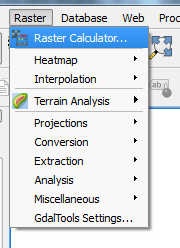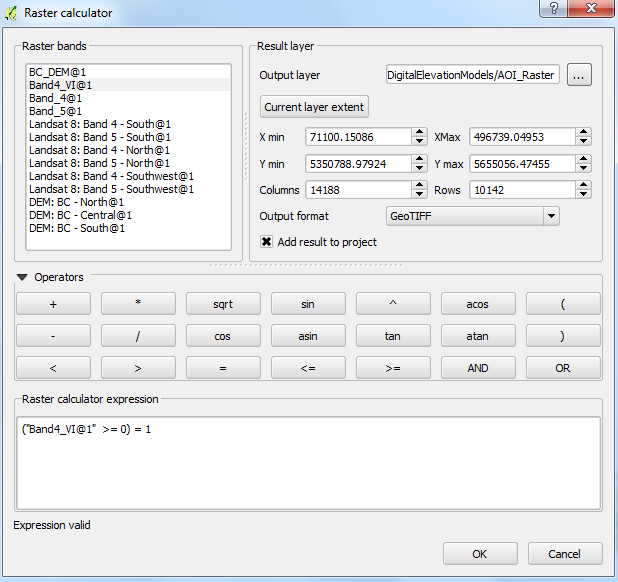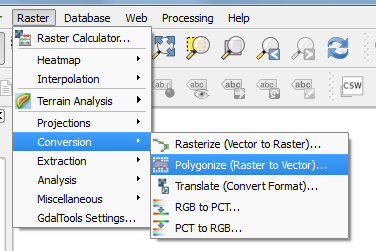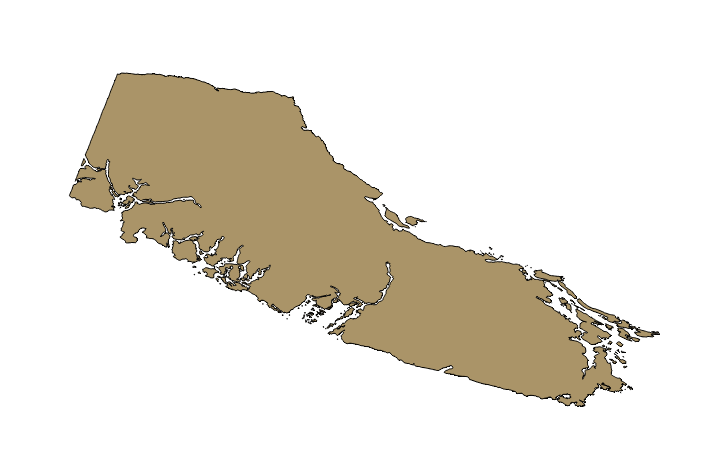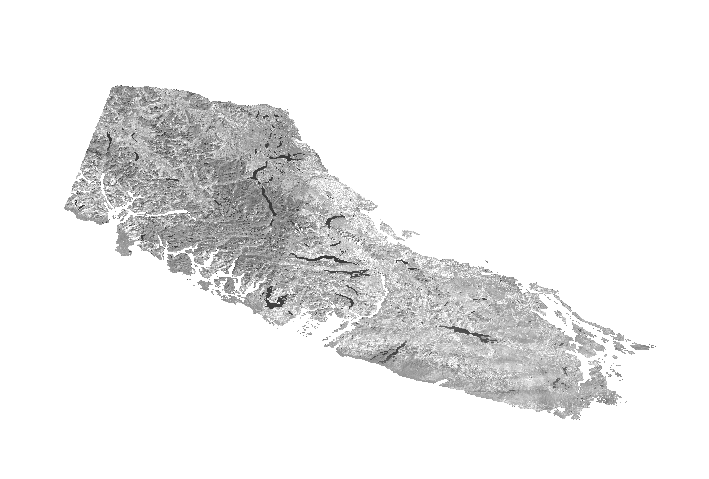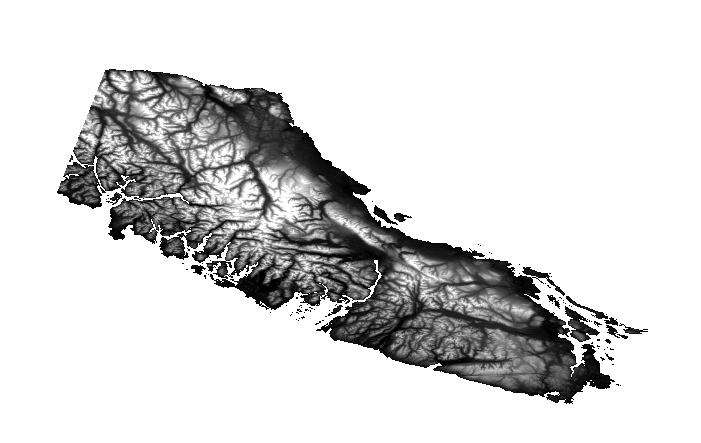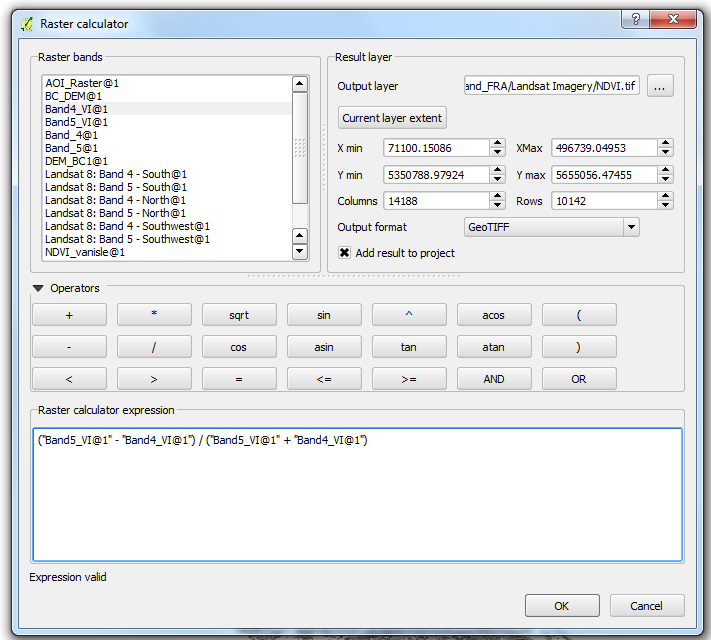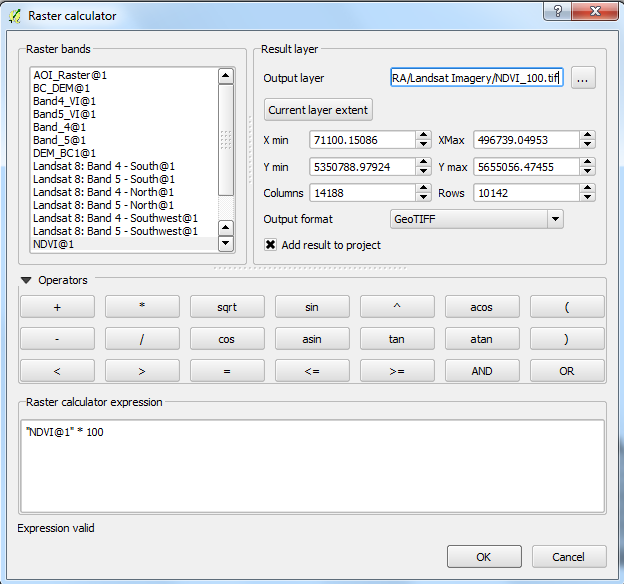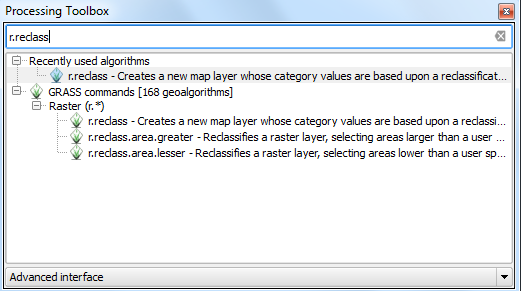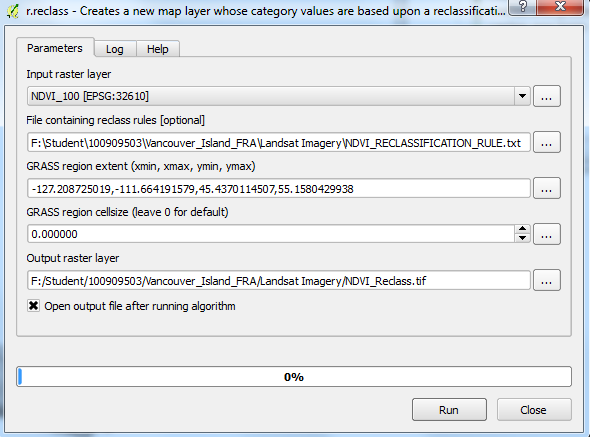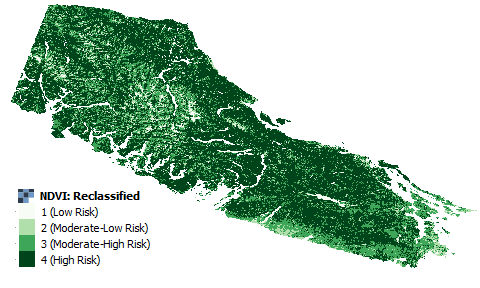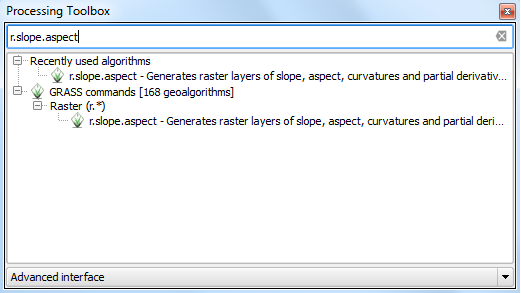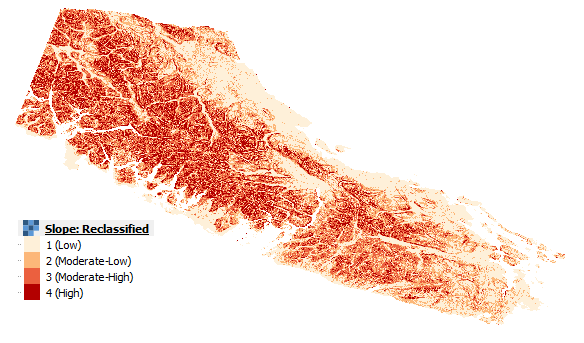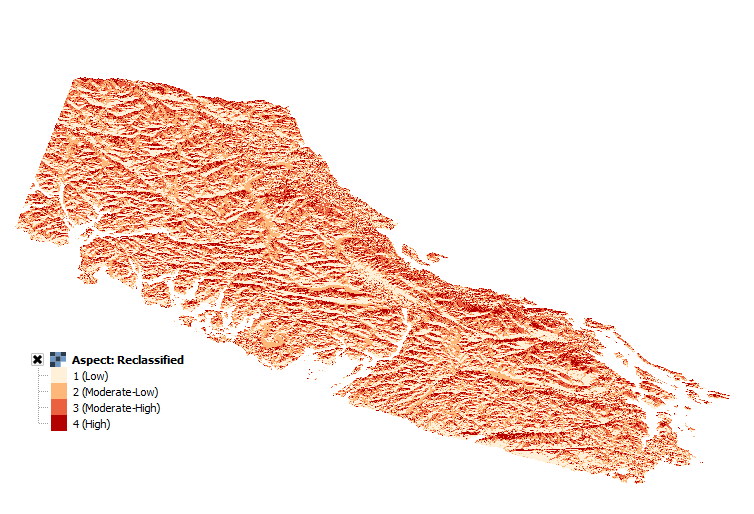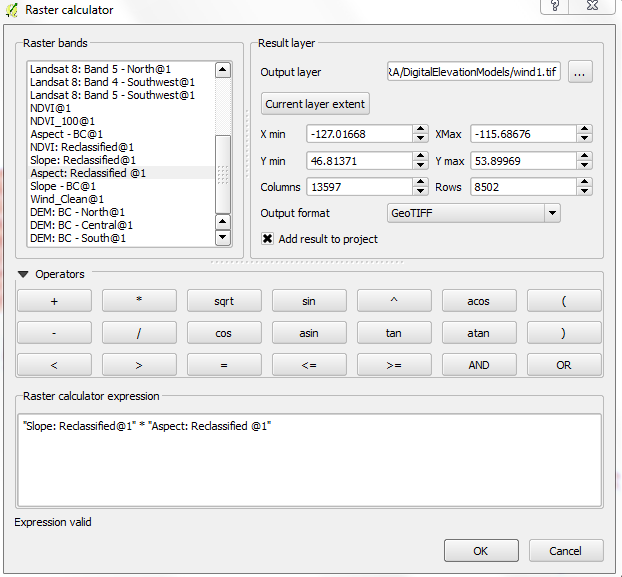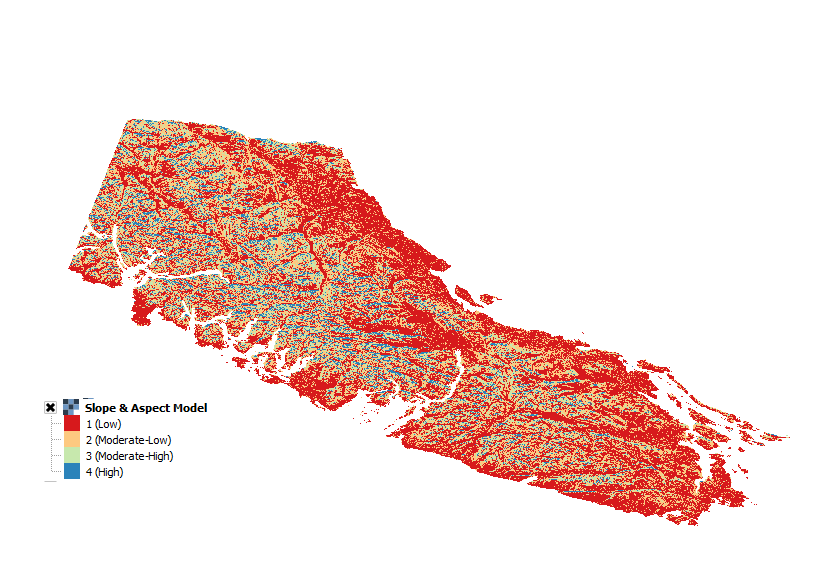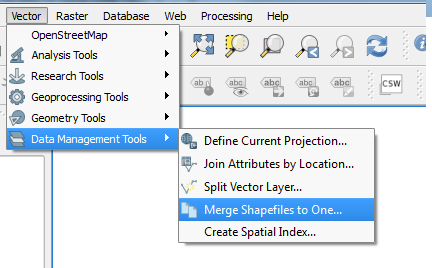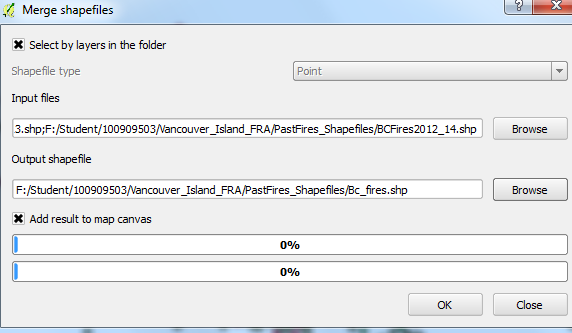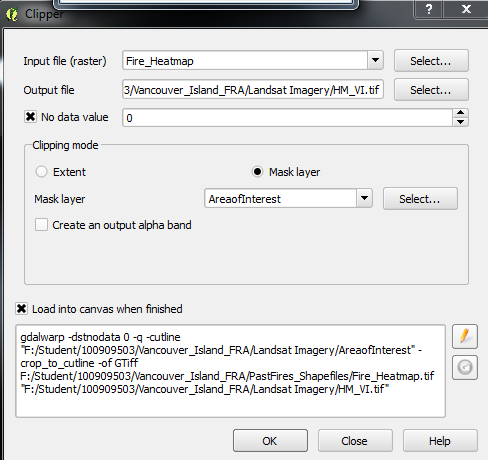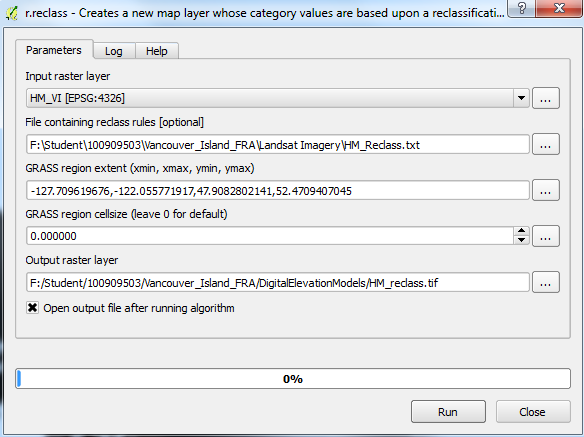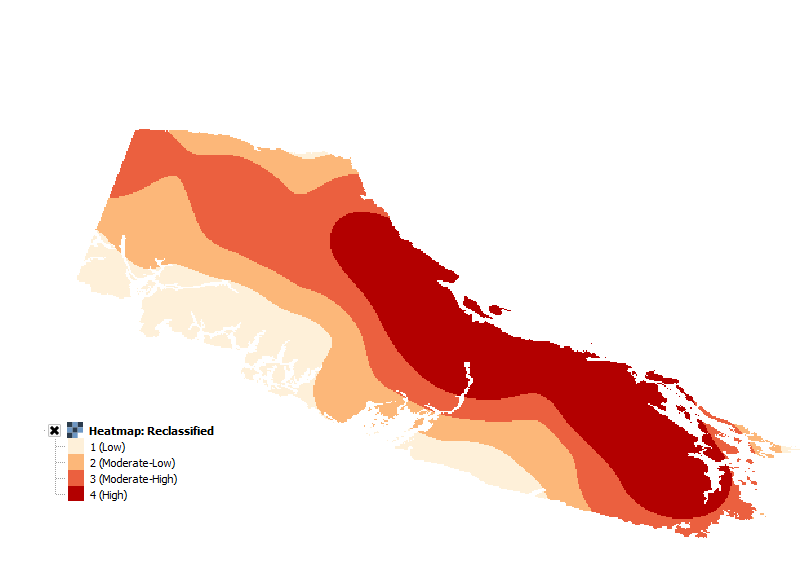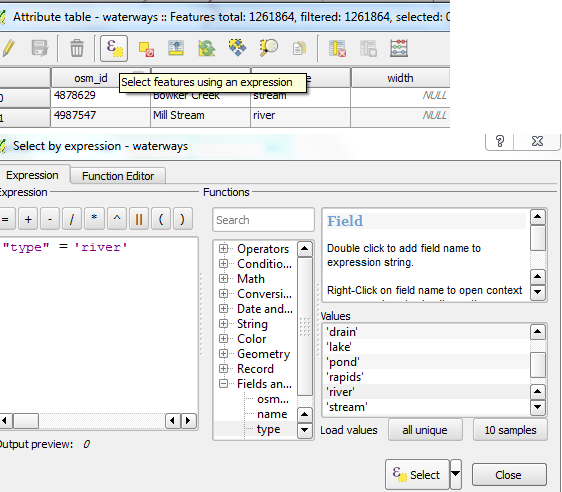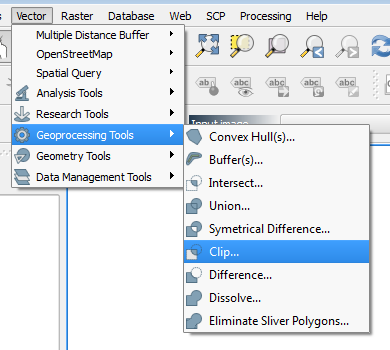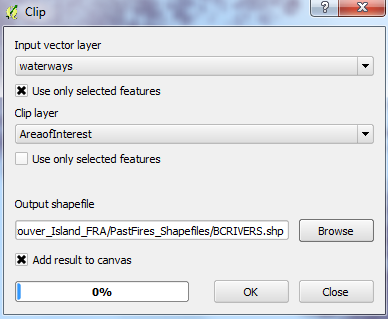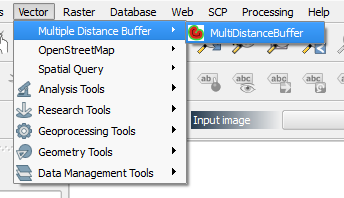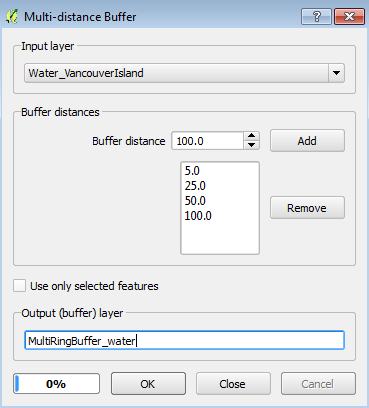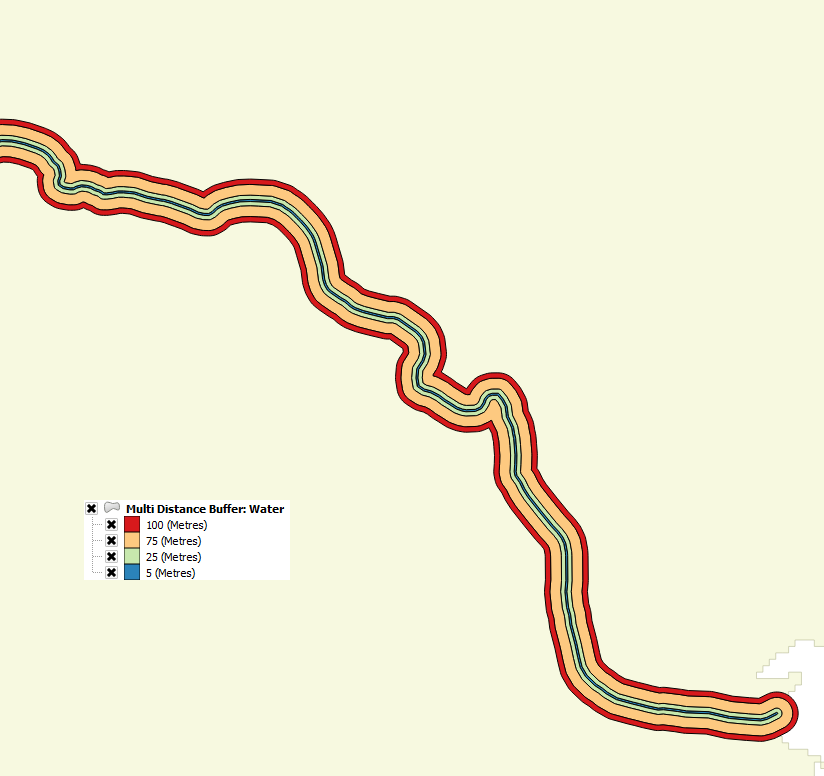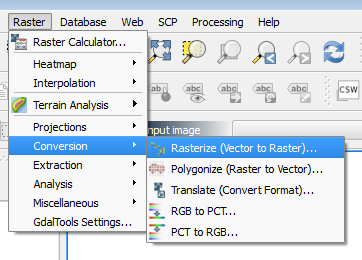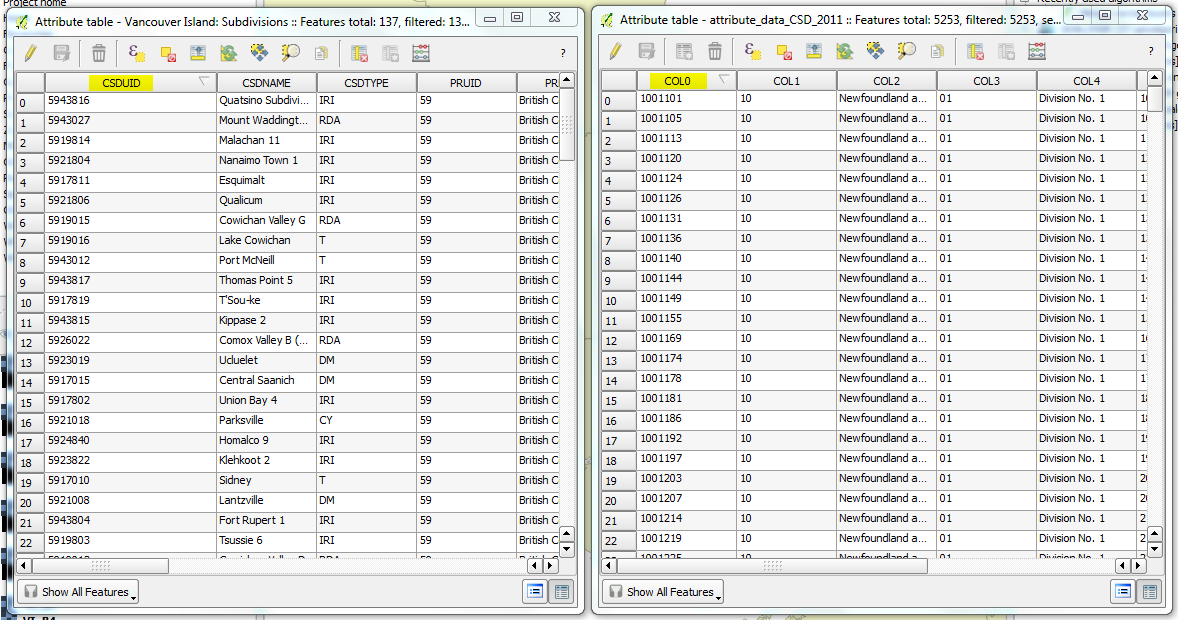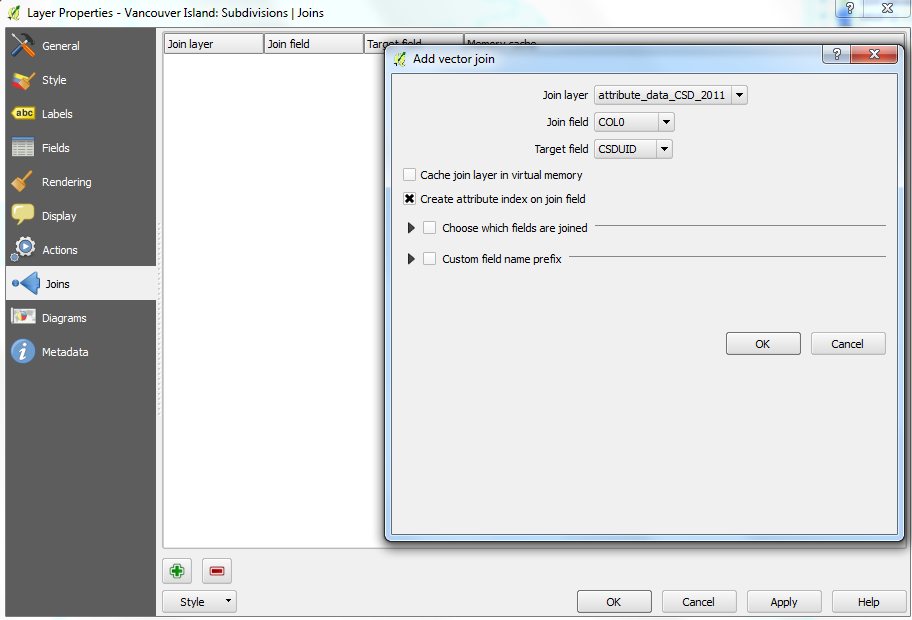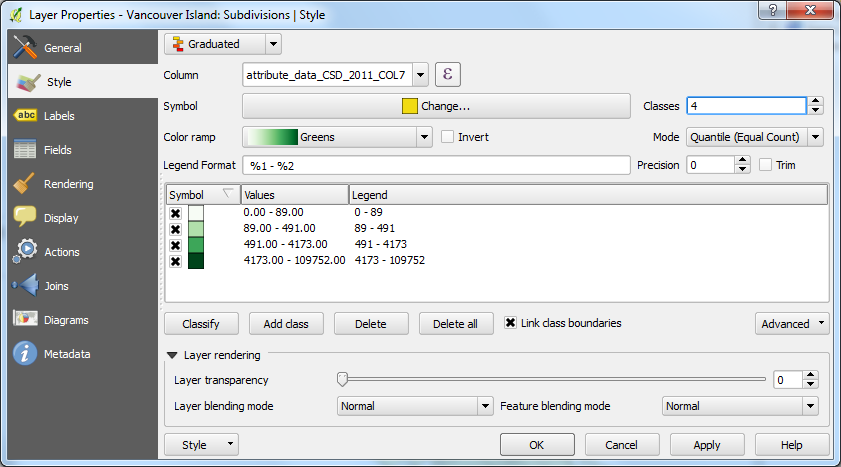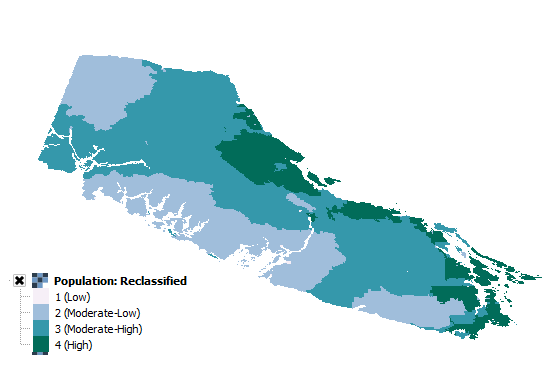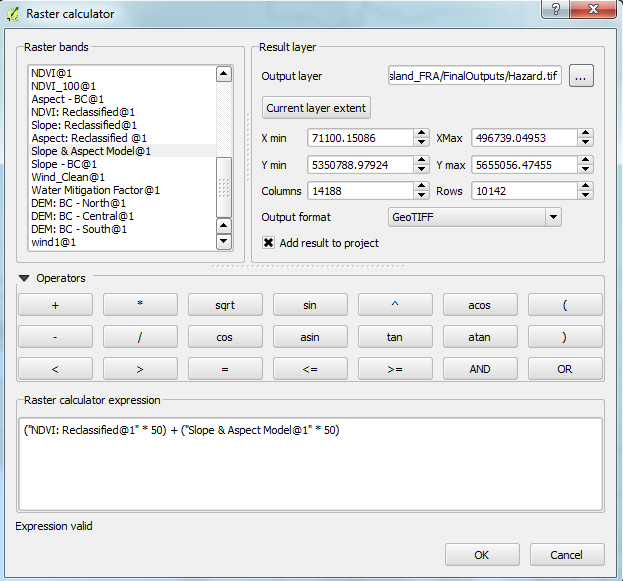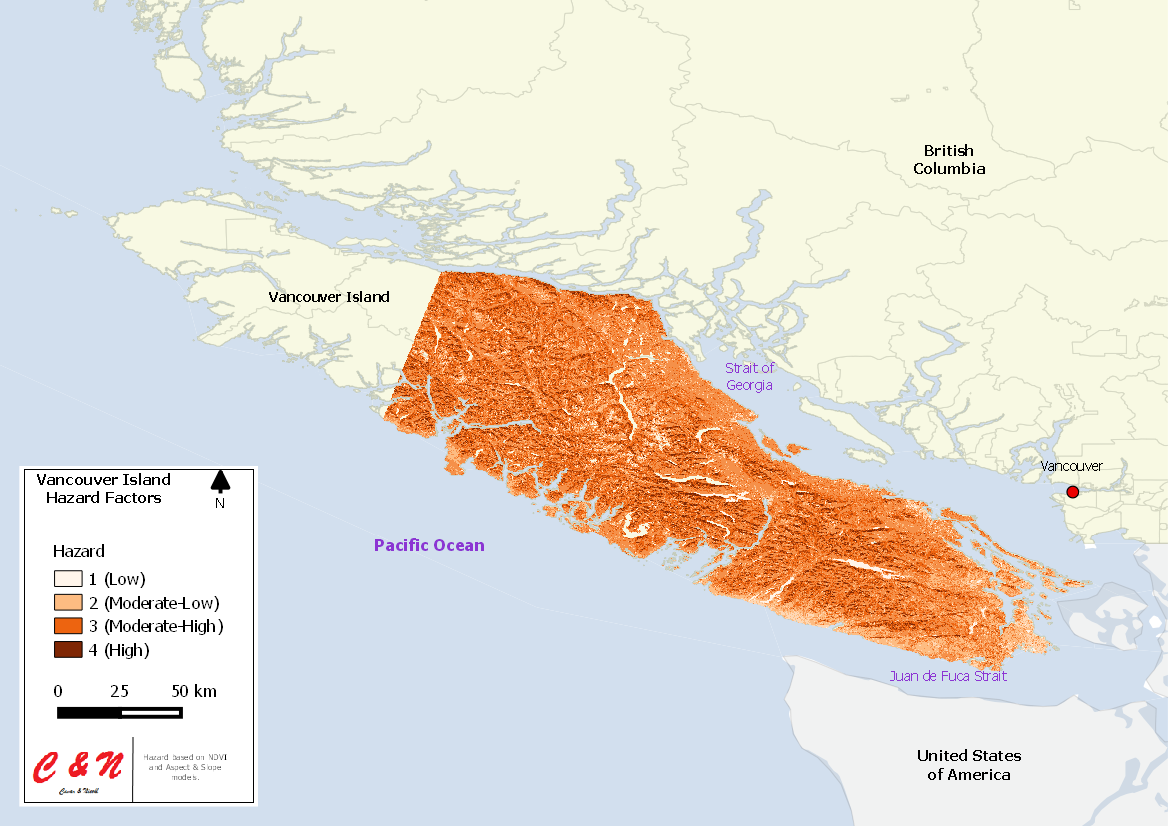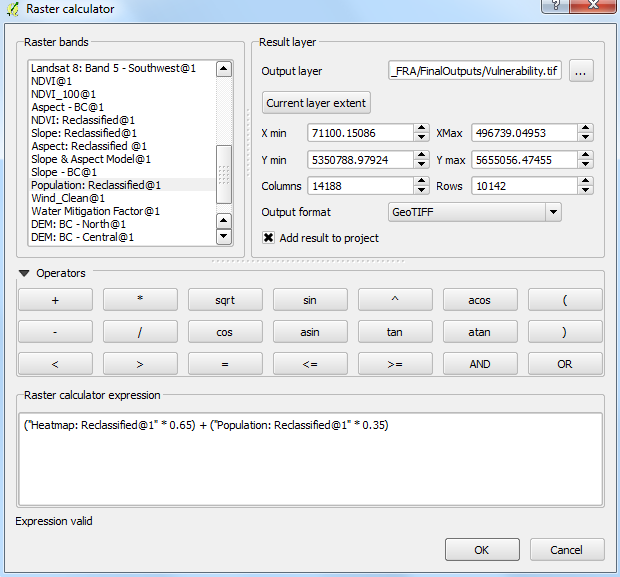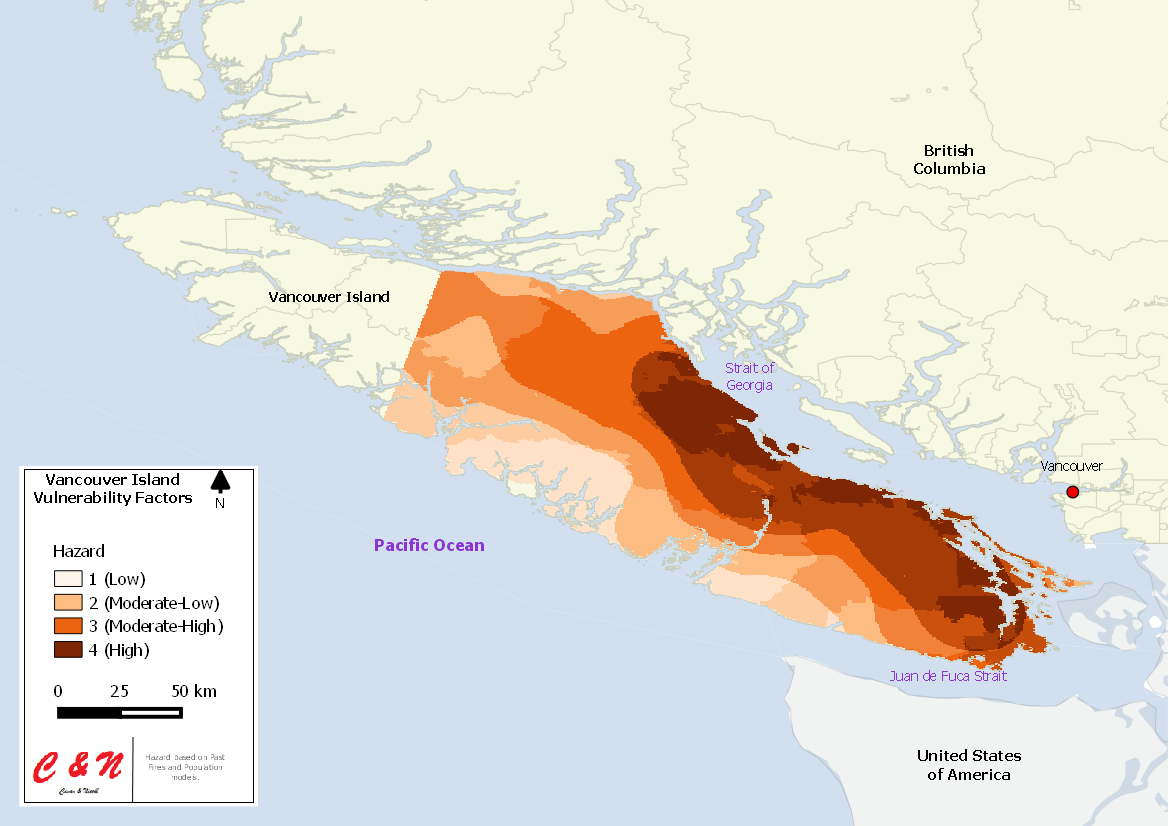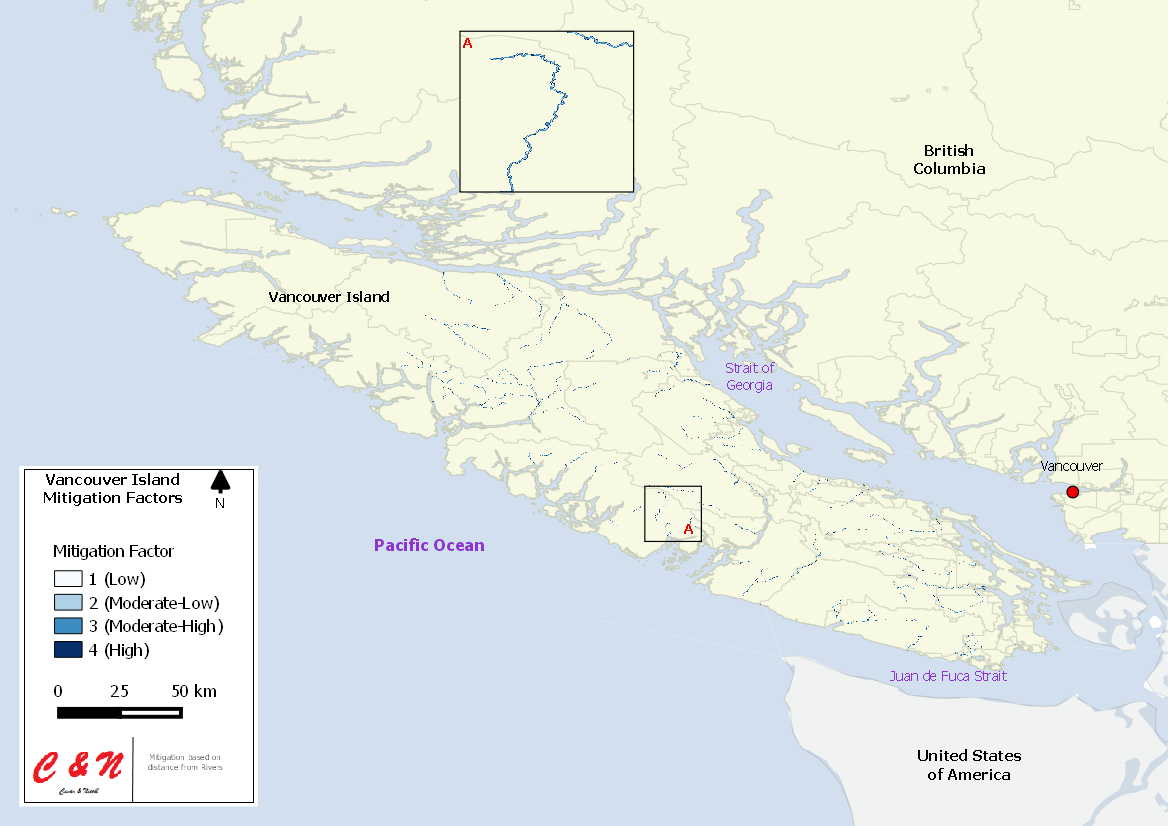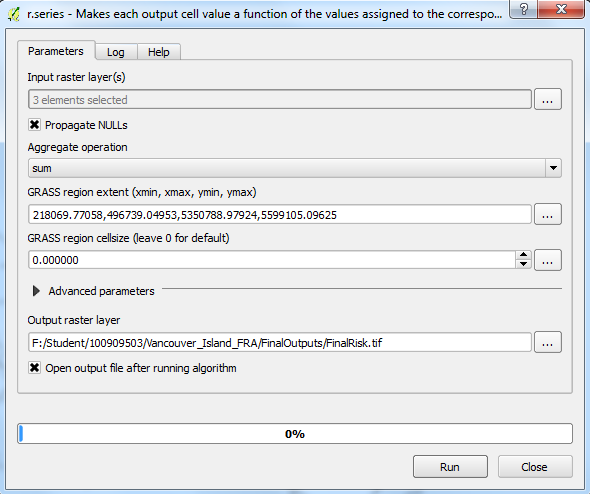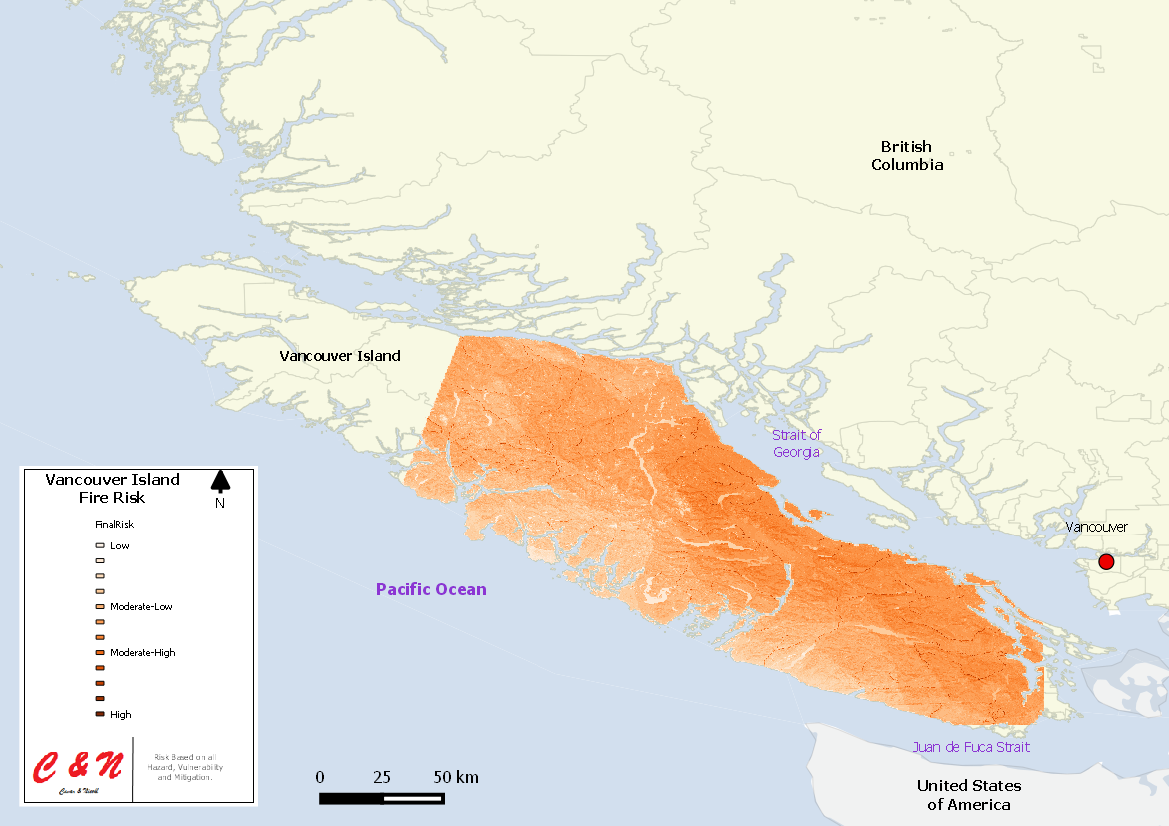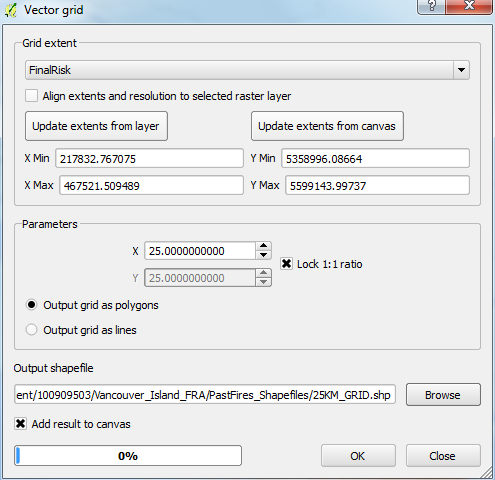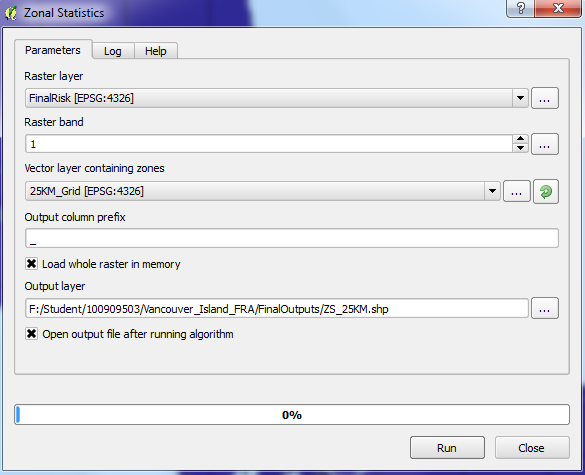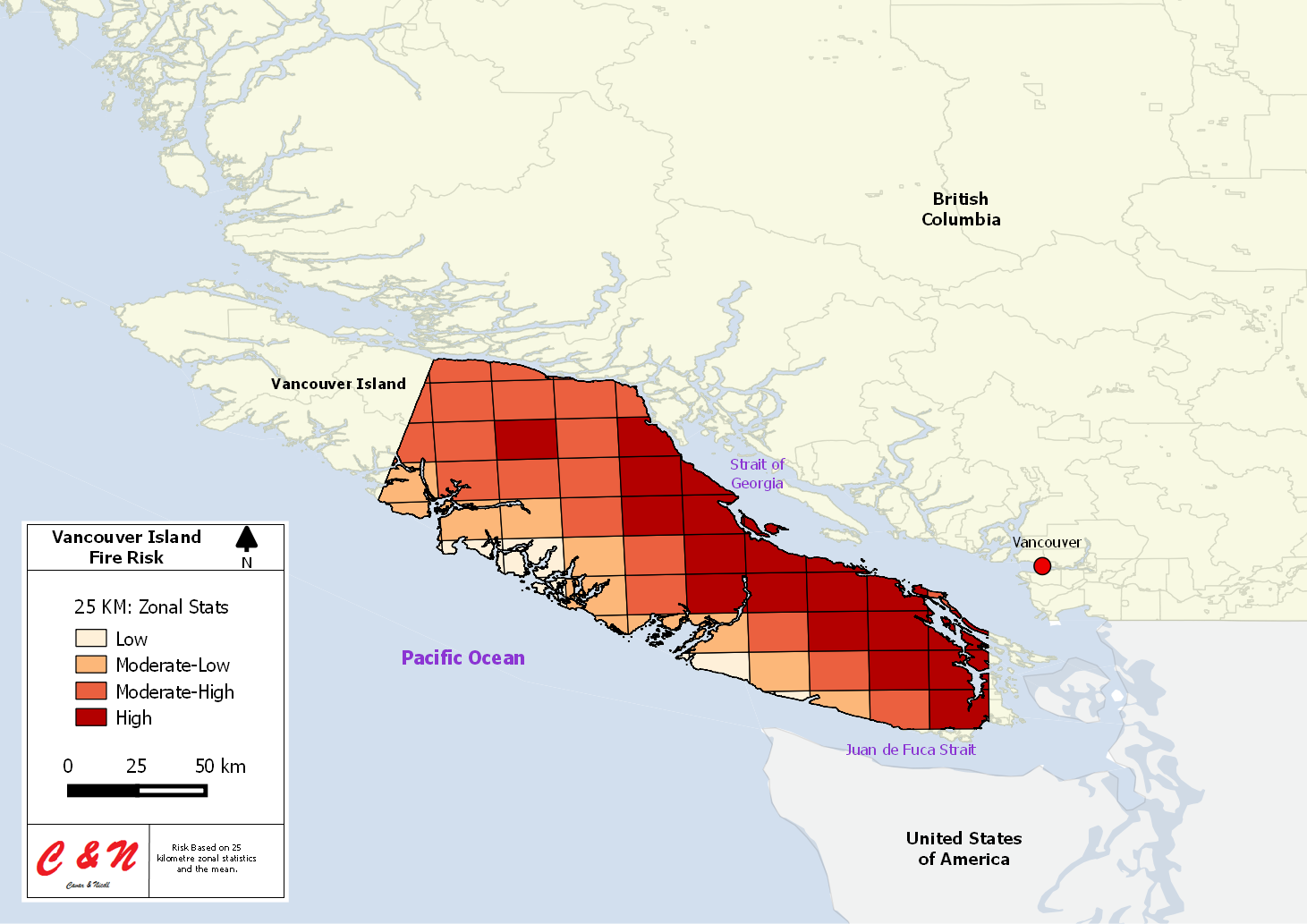Difference between revisions of "Fire Risk Analysis using QGIS"
| (247 intermediate revisions by 7 users not shown) | |||
| Line 1: | Line 1: | ||
| − | '''NOTE:''' This is a work in progress, and subject to change. |
||
| − | == |
+ | ==Introduction== |
| + | 2 questions will be addressed: |
||
| − | This tutorial will demonstrate how to use multiple tools within [http://www.qgis.org/en/site/ QGIS] in order to run a fire risk analysis, manipulating vector and raster data, along with the final output of maps. This tutorial uses tools from QGIS' advanced interface, which include QGIS, [https://grass.osgeo.org/ GRASS GIS], and plugins that you will need internet connection for in order to download them into QGIS. Major tools that will be used in this tutorial include: |
||
| + | 1) What is Fire Risk Analysis? |
||
| + | 2) Why do we perform this analysis? |
||
| + | A fire risk analysis is the evaluation or examination of fire hazards and measures to protect people against fire. It is performed so that we can make advanced preparation to ensure the safety of those at risk. |
||
| + | This tutorial will demonstrate how to use multiple tools within [http://www.qgis.org/en/site/ QGIS] 3.42.2 (Current) in order to perform a fire risk analysis. This analysis includes manipulating vector and raster data in order to produce final output maps. This tutorial uses tools from QGIS' advanced interface, including QGIS itself and [https://grass.osgeo.org/ GRASS GIS]. Major tools that will be used in this tutorial include: |
||
| − | + | '''Build Virtual Raster Catalog''' - ''QGIS'' OR '''Build virtual raster''' - ''GDAL'' |
|
| + | '''Clipper''' - ''QGIS'' |
||
| − | '''Aspect and Slope''' - ''GRASS GIS'', '''Reclass''' - ''GRASS GIS'' |
||
| − | ''' |
+ | '''Merge Vector Layers''' - ''QGIS'' |
| + | |||
| + | '''Polygonize''' - ''QGIS'' |
||
| + | |||
| + | '''Rasterize''' - ''QGIS'' |
||
| + | |||
| + | '''Raster Calculator''' - ''QGIS'' |
||
| + | '''Zonal Statistics''' - ''QGIS'' |
||
| − | ''Although this tutorial is a walk through, it is highly recommended that you have knowledge of a GIS before attempting this analysis, this is an advanced tutorial.'' |
||
| + | '''Heatmap (Kernel Density Estimation)''' - ''QGIS'' |
||
| − | ==Introduction== |
||
| + | |||
| − | For the purpose of this tutorial, the study area that will be used to demonstrate a Fire Risk Analysis will be approximately 75% of Vancouver Island from just South of Telegraph Cove to Victoria (''Figure 1''). During this fiscal year (''April 1, 2015 – March 31, 2016'') there have been 1 843 fires in the entire province of British Columbia which has resulted in approximately 305 000 hectares of land being burn. The area that we will be analyzing for the purpose of this tutorial around Vancouver Island has had just under 200 fires resulting in approximately 25 000 hectares of burnt land according to the [http://bcwildfire.ca/hprScripts/WildfireNews/FireCentrePage.asp?FC=2 Government of B.C. Wildfire Service]. |
||
| + | '''Multi-ring buffer (constant distance)''' - ''QGIS'' |
||
| + | |||
| + | '''Aspect and Slope''' - ''GRASS GIS'' OR ''QGIS'' |
||
| + | |||
| + | '''Cell Statistics''' - ''GRASS GIS'' |
||
| + | |||
| + | '''Reclass''' - ''GRASS GIS'' |
||
| + | |||
| + | ''Although this tutorial is a walk through, it is highly recommended that you have GIS knowledge before attempting this analysis.'' |
||
| + | |||
| + | ==Purpose== |
||
| + | For the purpose of this tutorial, the study area used to demonstrate a fire risk analysis will be approximately 80% (2.6 million hectares) of Vancouver Island from just South of Telegraph Cove to Victoria (''Figure 1''). Despite this tutorial's focus on Vancouver Island, in theory the process could be applied to any study area where relevant data are available. During the fiscal year of the study period in this case (''April 1, 2015 – March 31, 2016'') there have been 1,843 fires in the entire province of British Columbia which has resulted in approximately 305,000 hectares of land being burned. The area that we will be analyzing for the purpose of this tutorial around Vancouver Island has had just under 200 fires resulting in approximately 25,000 hectares of burnt land according to the [http://bcwildfire.ca/hprScripts/WildfireNews/FireCentrePage.asp?FC=2 Government of B.C. Wildfire Service]. These numbers vary on study area and year-to-year, as there have been only 11 wildfires in the Coastal British Columbia region in 2021, including Vancouver Island. More information on BC wildfires can be found at the above link, or at the [https://governmentofbc.maps.arcgis.com/apps/dashboards/f0ac328d88c74d07aa2ee385abe2a41b ArcGIS Online Map], which is an interactive map updated frequently. |
||
| + | |||
| + | This tutorial will demonstrate how to create maps that identify areas that have a high risk of fires based on multiple factors. In turn, the maps can help respondents react quicker to help prevent future fires or fires from spreading by implementing measures based on the high risk of fires in a certain area. This analysis is based on summer months in British Columbia (''Landsat Imagery acquired from the end of June 2013''). |
||
| + | |||
| + | For the purpose of this analysis risk will be categorized into 4 classes, with 1 being the lowest possible risk, and 4 being the highest possible risk, using reclassification methods. |
||
| + | |||
| + | '''1''' = Low Risk |
||
| + | '''2''' = Moderate-Low Risk |
||
| + | '''3''' = Moderate-High Risk |
||
| − | This tutorial will show how to create maps that identify areas that have a high risk of fires based on multiple factors. These maps in turn, can help responders react quicker to help prevent future fires by implementing measures based on the high risk of fires in a certain area on the island. |
||
| + | '''4''' = High Risk |
||
| − | All data and software used in this tutorial are open |
+ | All data and software used in this tutorial are open source or open access. |
[[File:FRA_StudyArea.png]] |
[[File:FRA_StudyArea.png]] |
||
| Line 26: | Line 55: | ||
==Software== |
==Software== |
||
| + | The software being used in this tutorial is an open-source GIS desktop application named “QGIS” formerly known as “Quantum GIS”. You can download the software by clicking [http://www.qgis.org/en/site/forusers/download.html '''here''']. Select the appropriate file to download onto your computer and follow the download instructions. QGIS can be downloaded and used on many different operating systems including; '''Android''', '''BSD''', '''Linux''', '''Mac''' and '''Windows'''. QGIS updates its versions often, so make sure you are using the most update to date version; this tutorial is based on 3.42.2. |
||
| + | |||
| + | Once you have downloaded the software, you may begin the tutorial. |
||
==Data== |
==Data== |
||
===Data Identification=== |
===Data Identification=== |
||
| − | In order for the analysis to be run, data sets were identified |
+ | In order for the analysis to be run, data sets were identified based upon research of academic journals and research papers which topics included a fire risk analysis, assessment or use of a GIS with forest fires. Based upon the research, the 5 major data sets that were needed include: |
| − | 1. Census subdivisions & attribute data ( |
+ | 1. Census subdivisions & attribute data (areas of high population) |
2. Landsat 8 imagery (Normalized Difference Vegetation Index - '''NDVI''') |
2. Landsat 8 imagery (Normalized Difference Vegetation Index - '''NDVI''') |
||
| Line 43: | Line 75: | ||
The data sets were then categorized into three different categories (''Table 1''), which will create three maps that will be calculated against each other; fire hazards, vulnerability factors & mitigation factors. |
The data sets were then categorized into three different categories (''Table 1''), which will create three maps that will be calculated against each other; fire hazards, vulnerability factors & mitigation factors. |
||
| − | ''Table 1.'' Data sets that were collected, categorized into three different categories. |
||
| + | ''Table 1.'' Data sets that were collected, categorized into three different categories. |
||
| + | |||
[[File:FRA_datatable.PNG]] |
[[File:FRA_datatable.PNG]] |
||
| + | |||
| − | |||
===Data Set Links & Guide=== |
===Data Set Links & Guide=== |
||
1. [https://www12.statcan.gc.ca/census-recensement/2011/geo/bound-limit/bound-limit-2011-eng.cfm Census Subdivisions] |
1. [https://www12.statcan.gc.ca/census-recensement/2011/geo/bound-limit/bound-limit-2011-eng.cfm Census Subdivisions] |
||
[http://www12.statcan.gc.ca/census-recensement/2011/dp-pd/hlt-fst/pd-pl/Table-Tableau.cfm?T=301&S=3&O=D Attribute Data] |
[http://www12.statcan.gc.ca/census-recensement/2011/dp-pd/hlt-fst/pd-pl/Table-Tableau.cfm?T=301&S=3&O=D Attribute Data] |
||
| − | [http://dc1.chass.utoronto.ca.proxy.library.carleton.ca/census/ Attribute Data *] |
||
| − | Download the census subdivision boundary file as a shapefile and download the census subdivision attributes. |
+ | Download the census subdivision boundary file as a shapefile and download the census subdivision attributes, either as a .CSV or .DBF file. These direct links pertain to the original (2014) study of wildfires. More recent Census data (2016, and in the future, 2021) may be accessed [https://www12.statcan.gc.ca/census-recensement/index-eng.cfm Here (Catch-all for Census Data under "Data products"]. |
| − | 2. [http://earthexplorer.usgs.gov/ Landsat 8 Imagery |
+ | 2. [http://earthexplorer.usgs.gov/ Landsat 8 Imagery] |
| − | + | Before starting with the USGS' Earth Explorer portal, account creation is required (and free) to download data products. The first step on the USGS portal is to query using specific criteria to search for required data. First, under '''Search Criteria''' select the area of your interest by creating a polygon around your study area (in this case Vancouver Island, but Landsat products can be found globally). Select an appropriate date range - in our analysis we looked at data from June 2013 to August 2013 (''Specific imagery from the end of June 2013'') when forest fires are most prominent in this region. Research on fire season, vulnerability, and frequency would be useful for a different study area. Next, click '''Data Sets''' navigate to '''Landsat''', and the subfolder '''Landsat Collection 2 Level-1'''. Level 1 data is required to make band calculations involved in the calculation of NDVI (Normalized Difference Vegetation Index) later in the tutorial. Next, check the first box under that folder titled '''L8-9 OLI/TIRS C2 L1'''. Under '''Additional Criteria''' you may select whether the imagery was taken during day or night and the percentage of cloud cover in the imagery. For the purpose of this tutorial, it would be ideal to select imagery during the day and with less than 10% cloud coverage (actually, all Landsat images are day-time images, but the cloud cover limit is important). Once you have queried the Landsat files, you will receive a large list of Landsat products. The most effective way to select Landsat products that cover your entire study area (it may take up to 8+ Landsat squares to cover the entire study area, depending on size), is to use the "Show Footprint" button |
|
| + | and use the viewer to examine if the Landsat products completely contain your study area, as seen in the images below (Figure #2). |
||
| + | |||
| + | [[File:Footprint+Landsat.png|frameless|center| usgs viewer, showing selected footprints]] |
||
| + | |||
| + | ''Figure 2.'' The figures show the Landsat imagery collected from the USGS website. |
||
| + | |||
| + | The data can then be either added to a 'bulk order' item basket, and may be batch downloaded via USGS' linked 'Bulk Download Application'. Because of this flaw in the USGS' bulk order system, the files should be downloaded individually from the map viewer. In addition, these files are large (8GB in total if downloading 8 Landsat squares), so set aside some time to 'hurry up and wait' before completing this tutorial. The Landsat data that you want to download is the "Landsat Collection 2 Level-1 Product Bundle", or those around 1GB in size. If possible, you can also query in the map viewer for some products' specific band returns, which in this case study are bands 4 and 5; if this is an option, simply download ONLY bands 4 and 5 to save time and storage space. |
||
3. [http://dwtkns.com/srtm/ Digital Elevation Model] |
3. [http://dwtkns.com/srtm/ Digital Elevation Model] |
||
| − | Simply pan the globe to your study area, click the tile and download. The elevation model is at a 90-metre resolution. Note, you will have to unzip the files after they have downloaded in order to access the elevation models. |
+ | Simply pan the globe to your study area, click the tile and download. The elevation model is at a 90-metre resolution. Note, you will have to unzip the files after they have downloaded in order to access the elevation models. Despite the new (January 2021) error message on the linked webpage, the elevation tiles were still accessible via the portal linked above. You can safely ignore the error message as long as you are able to download the desired files. |
4. [https://www.for.gov.bc.ca/ftp/HPR/external/!publish/Maps_and_Data/GoogleEarth/WMB_Fires/ Past Fires] |
4. [https://www.for.gov.bc.ca/ftp/HPR/external/!publish/Maps_and_Data/GoogleEarth/WMB_Fires/ Past Fires] |
||
| − | + | Above are linked KMZ (zipped KML) files for BC wildfires in the past 5 years, updated fairly frequently. The link will display wildfire data from 2015-2020. When the path is accessed, it will likely contain the previous 5 years of wildfire KMZ files for BC. The.KML file will be operable in QGIS and will be added as a vector layer. |
|
5. [http://download.geofabrik.de/north-america/canada/british-columbia.html Water Bodies] |
5. [http://download.geofabrik.de/north-america/canada/british-columbia.html Water Bodies] |
||
| − | Download the zipped folder containing multiple shapefiles of British Columbia, after you have unzipped the folder the shapefile that will be needed for the analysis will be called, ''waterways.shp''. |
+ | Download the zipped folder containing multiple shapefiles of British Columbia, after you have unzipped the folder the shapefile that will be needed for the analysis will be called, ''waterways.shp''. The linked ZIP folder is also large (just under 1GB), so if any alternative data sources can be found via [https://catalogue.data.gov.bc.ca/dataset?tags=waterbodies BC Data Portal]. |
''* Must be a Carleton University alumni, faculty, student or other institution approved by CHASS in order to access this attribute data.'' |
''* Must be a Carleton University alumni, faculty, student or other institution approved by CHASS in order to access this attribute data.'' |
||
| + | '''Note:''' It is recommended you download [http://sourceforge.net/projects/sevenzip/ 7-Zip] to help unzip the Landsat Imagery and KMZ files. However, 7ZIP is not fully necessary, as Windows Explorer has built-in functionality to deal with zipped files via right click options. |
||
| − | ''** In order to access the Level 1 data that includes the bands needed to calculate a NDVI, you must create a USGS account.'' |
||
| − | |||
| − | '''Note:''' It is recommended you download [http://sourceforge.net/projects/sevenzip/ 7-Zip] to help unzip the Landsat Imagery and KMZ files. |
||
==Tutorial== |
==Tutorial== |
||
===Setting up the Environments=== |
===Setting up the Environments=== |
||
| + | In QGIS 3.42.2, the environment is already setup and ready to use for the analysis in this tutorial, unlike older versions. The only two plugins you need to enable are the multi-distance buffer and the GRASS GIS tool. Next you need to setup the coordinate system. By clicking on 'Project' tab then properties, nder the CRS Tab, choose an appropriate coordinate reference system. We chose WGS 84 (ESPG:4326) for this project; however for many mapping products, a projected coordinate system is preferable such as a local UTM or Web Mercator. More information on what CRS to use can be found here |
||
| − | There are three steps in order to set up your environment for this tutorial. |
||
| + | [[File:Plugins_tab.png]] |
||
| − | '''1.''' The first thing to do after opening the QGIS desktop, navigate to the '''Project''' tab and select ''Project Properties'' (''Figure 2''). This is where you can name you project (''General Tab'') and ensure your coordinate system is correct (''CRS Tab''). Under the CRS Tab, check 'Enable on the fly CRS transformation', and choose an appropriate coordinate reference system, we chose a WGS 84 (ESPG:4326). |
||
| + | ''Figure 3.'' Showing where the Plugin tab is located. |
||
| − | [[File:FRA_Environment.PNG]][[File:FRA_Environment_CRS.PNG]] |
||
| + | ===Importing the Data=== |
||
| − | ''Figure 2.'' Opening the properties tab to name your project and define an appropriate coordinate system for your study area, by enabling 'on the fly projection'. Here a WGS 84 coordinate system was used. |
||
| + | [[File:Screenshot_2022-10-11_012941.png|200px|thumb|left|alt text]] |
||
| + | Since we have multiple types of data to be imported, *Under the layer menu in the top left well click on it and we will have to use the* '''Add Vector Layer'''[[File:FRA_AddVector.PNG]] and '''Add Raster Layer''' [[File:FRA_AddRaster.PNG]], located along the left hand-side of the QGIS user interface. These also can be accessed via the "Layer/Add Layer" drop-down. |
||
| + | The data to be imported using the '''Add Vector Layer''' includes the following; Census subdivision cartographic boundary ''shapefile'', three past fires ''kml files'', and the waterways ''shapefile''. In order to access these files, you must find the file location of each folder containing the boundary shapefile, your extracted KMLs, and the waterways shapefile found in the OpenStreetMap data downloaded titled "gis_osm_waterways_free_1.shp". |
||
| + | The data to be imported using the '''Add Raster Layer''' includes the following; Three Digital Elevation Models ''tiff files'', and the three Landsat 8 Imagery ''tiff files''. In order to calculate the [http://landsat.usgs.gov/band_designations_landsat_satellites.php NDVI], we will need the Red ('''4''') and Near Infrared ('''5''') bands, they will both need to be selected per imagery. |
||
| + | ===Organizing the Data=== |
||
| − | '''2.''' The next step will be to add the plugin you will need for an analysis. Navigate to the '''Plugin''' tab (''ensure you have internet connection'') and select ''Manage and Install Plugins''. The plugin interface will now appear, in the search box located at the top type in 'heatmap' and check the box beside the heatmap plugin (''Figure 3''). This tool creates a heatmap (raster) based on the proximity of vector points to one another, detecting spatial pattern/clustering which will be used for the past fires data. |
||
| + | In order to keep your data organized, and to avoid confusion it is a good idea to group your data based on the five data types that were imported. It is recommended that you change the name of the data immediately after importing to a name that makes sense or relates to set data layer. In the layer on the left hand-side, right click on the layer you want to change the name for and click "Rename Layer". Do that for all the layers you added. |
||
| + | |||
| + | The next step is to group the data based on the original 5 categories that the data were imported in, as depicted in ''Figure 3''. Hold the control button on PC or command on Mac and select the appropriate data layers to group, right click and select group and rename accordingly. |
||
| − | [[File: |
+ | [[File:FRA_GroupLayers.PNG]][[File:FRA_IdealGrouping.PNG]] |
| − | ''Figure |
+ | ''Figure 4.'' The figures show how to group the data along with the ideal grouping scheme. |
| + | ===Working with the Data=== |
||
| + | Now we can begin to use tools to manipulate the data. We first need to work with the '''Census subdivision (CSD) boundary shapefile''' to create a CSD of Vancouver Island. However, this will not be our area of interest. In order to create a new shapefile of just Vancouver Island you must turn the attribute toolbar on, it should be automatically turned on - if it is not right click just under the properties and check the attribute toolbar on. After you have done so, move to select features (''it can be done by polygon, freehand, etc. - whatever you feel most comfortable with'') and select all census subdivisions that reside on Vancouver Island. |
||
| + | After you select the method you wish to select features with, in the case shown with ''Figure 5'' hold control or command while selecting the polygons. After all features are selected, right click the CSD layer and save the '''selected features''' as a new shapefile, give it an appropriate name. |
||
| − | '''3.''' The final step in setting up your environment is to turn on the adavnced interface for your toolbox in order to access the GRASS GIS tools. Navigate to the '''Processing''' tab and select ''Toolbox'' and the toolbox interface should appear, and at the bottom of the toolbox ''Simple Interface'' should be on, click that box and turn ''Advanced Interface'' on (''Figure 4''). |
||
| − | [[File: |
+ | [[File:FRA_SelectFeatures_VI.PNG]][[File:FRA_SelectFeatures_VI_Save.PNG]] |
| + | ''Figure 5.'' The figures show Vancouver Island being selected and how to save the selected features as a new shapefile. |
||
| − | ''Figure 4.'' Setting up the advanced toolbox interface. |
||
| + | ===Creating an Area of Interest & Building Virtual Raster Catalogs=== |
||
| − | ===Importing the Data=== |
||
| + | In order to create our area of interest we will need to build virtual rasters based on the Landsat imagery and clip it to the newly created Vancouver Island CSD shapefile. The first step is to turn all of your Landsat 8 imagery on (either all of the band 4 or band 5 imagery), then navigate to the '''Raster''' tab, click ''Miscellaneous'' and finally click '''Build a Virtual Raster (VRT)'''. For all of the rasters imported you will need to create a virtual catalog for each group. Turn the group on that you wish to convert into one raster; you will need to do it for the Landsat 8 Imagery: Band 4, Landsat 8 Imagery: Band 5 and the three Digital Elevation Models. While creating the virtual raster (VRT), ensure that no data is set to '''0''' and the resolution is set to '''highest''', these rules can be applied to all of the above (''Figure 6''). |
||
| − | Since we have multiple types of data to be imported, we will have to use the '''Add Vector Layer'''[[File:FRA_AddVector.PNG]] and '''Add Raster Layer''' [[File:FRA_AddRaster.PNG]], located along the left hand-side of the QGIS user interface. |
||
| + | [[File:FRA_RasterBVRC.PNG]][[File:FRA_BVRC_Save.PNG]] |
||
| − | The data to be imported using the '''Add Vector Layer''' includes the following; Census subdivision cartographic boundary ''shapefile'', three past fires ''kml files'', and the waterways ''shapefile''. |
||
| + | ''Figure 6.'' These figures show how to create a Virtual Raster (VRT), and the rules can be applied to all of the raster data sets. |
||
| − | The data to be imported using the '''Add Raster Layer''' includes the following; Three Digital Elevation Models ''tiff files'', and the three Landsat 8 Imagery ''tiff files''. In order to calculate the [http://landsat.usgs.gov/band_designations_landsat_satellites.php NDVI], we will need the Red ('''4''') and Near Infrared ('''5''') bands, they will both need to be selected per imagery (''Figure 5''). |
||
| + | After the Virtual Rasters are created, you will want to clip it to just Vancouver Island. For this we will use the Band 4 VRT, navigate to the '''Raster''' tab, click '''Extraction''' and use the '''Clipper''' tool, use input Band 4 as the raster to be clipped and use the Vancouver Island shapefile as the mask layer. Ensure that no data is set to '''0''' (''Figure 7''). |
||
| − | [[File:FRA_Landsat8_RedNIR.PNG]] |
||
| + | [[File:FRA_Clipper.PNG]][[File:FRA_ClipperRules.PNG]][[File:FRA_Band4.PNG]] |
||
| − | ''Figure 5.'' Importing the Red and Near Infrared bands per imagery, in order to calculate NDVI. |
||
| + | ''Figure 7.'' The figures showing how to use the clipper tool, using band 4 as the raster, Vancouver Island as the mask layer and setting 0 as no data and the newly created band 4. |
||
| − | ===Organizing the Data=== |
||
| − | In order to keep your data organized, and to avoid confusion it is a good idea to group your data based on the five data types that were imported. After importing the data it will look quite messy and may not make much sense, so it is recommended that you change the name of the data immediately after importing to a name that makes sense or relates to set data layer. In the layer on the left hand-side right click your data, click properties and rename your data for each - ''it is recommended you do this for each data set imported.'' (''Figure 6'') |
||
| + | After using the clipper tool and creating the new band 4 raster, you will want to reclassify all the values to 1 in order to create the area of interest. Navigate to '''Raster''' and click '''Raster Calculator''' and all values that are greater than and/or equal to 0 shall equal 1. After this has been created you will want to create a polygon based on this value which will be your area of interest/study area, by using the '''Polygonize''' function that is located under '''Raster''' tab and '''Conversion''' (''Figure 7''). |
||
| − | [[File: |
+ | [[File:FRA_RasterCalculator.PNG]][[File:FRA_RasterCalc_AOI.PNG ]] |
| − | [[File: |
+ | [[File:FRA_Polygonize.PNG]][[File:FRA_AOI_SHP.PNG]] |
| + | ''Figure 8.'' These figures show how to use the raster calculator to create a simple reclassification (all values that are equal and/or greater than 0 equal 1), which was then converted to a polygon for the area of interest. |
||
| − | [[File:FRA_RenamedData.PNG]] |
||
| + | After successfully creating your area of interest/study area. You can again apply the '''Clipper''' function to the other two VRT created using the area of interest shapefile as your mask (''Figure 9''). |
||
| − | ''Figure 6.'' The figures showing the messiness of data, along with renaming and the ideal layer renaming scheme. |
||
| − | |||
| − | The next step is to group the data based on the original 5 categories that the data were imported in, as depicted in ''Figure 7''. Hold the control button on PC or command on Mac and select the appropriate data layers to group, right click and select group and rename accordingly. |
||
| − | [[File: |
+ | [[File:FRA_Band5.PNG]][[File:FRA_DEM.PNG]] |
| − | ''Figure |
+ | ''Figure 9.'' The figures above show Band 5 (top) and the Digital Elevation Model (bottom) clipped to the study area. |
| + | ===Calculating Normalized Difference Vegetation Index and Reclassification=== |
||
| − | ===Working with the Data=== |
||
| + | For this part of the tutorial, we will be using the raster calculator to create a Normalized Difference Vegetation Index (NDVI). The reclassifying portion is where we first see the GRASS GIS tools being applied. The data that will be used in this section will be the newly clipped Band 4 ('''Red''') and newly clipped Band 5 ('''NIR'''). A NDVI calculation requires the following: [http://earthobservatory.nasa.gov/Features/MeasuringVegetation/measuring_vegetation_2.php '''NDVI''' = ''NIR - RED / NIR + RED'']. |
||
| − | Now we can begin to use tools to manipulate the data. We first need to work with the '''Census subdivision (CSD) boundary shapefile''', and need to create a CSD of Vancouver Island. However, this will not be our area of interest. In order to create a new shapefile of just Vancouver Island you must turn the attribute toolbar on, it should be automatically turned on - if it is not right click just under the properties and check the attribute toolbar on. After you have done so, move to select features (''it can be done by polygon, freehand etc. - whatever you feel most comfortable with'') and select all census subdivisions that reside on Vancouver Island (''Figure 8''). |
||
| + | Using the raster calculator we will be able to do this calculation, the output values should range from '''-1.0''' to '''1.0'''. The reclassification tool from GRASS GIS has a difficult time reclassifying decimals and usually rounds up. So in order to reclassify more accurately, you will have to multiple the '''NDVI''' created by an appropriate value and then reclassify. We chose to multiply it by 100, however if you feel there is a better method for your reclassification, you may do so (''Figure 10''). |
||
| − | [[File:FRA_AttributeToolbar.PNG]][[File:FRA_SelectFeatures.PNG]] |
||
| + | [[File:FRA_NDVI_Calc.PNG]][[File:FRA_NDVI_100.PNG]] |
||
| − | ''Figure 8.'' The figures show how to turn the attribute toolbar and select features in order to create the new shapefile. |
||
| + | [[File:FRA_NDVI_Map100.png]] |
||
| − | After you select the method you wish to select features with, in the case shown with ''Figure 9'' hit control or command while selecting the polygons. After all features are selected, right click the CSD layer and save the '''selected features''' as a new shapefile, give it an appropriate name. |
||
| + | ''Figure 10.'' The original NDVI calculation, the NDVI calculation multiplied by 100 in order for reclassification and the output values & visualization map. |
||
| − | [[File:FRA_SelectFeatures_VI.PNG]][[File:FRA_SelectFeatures_VI_Save.PNG]] |
||
| + | Based on the values outputted by the last raster calculation, we now can reclassify based upon those values. Justification for the reclassification is as follows; |
||
| − | ''Figure 9.'' The figures show Vancouver Island being selected and how to save the selected features as a new shapefile. |
||
| + | ''please refer to introduction for definition of risk numbers'' [[#Introduction]] |
||
| − | ===Creating an Area of Interest & Building Virtual Raster Catalogs=== |
||
| − | In order to create our area of interest we will need to build virtual rasters based on the Landsat imagery and clip it to the newly created Vancouver Island CSD shapefile. The first step is to turn all of your Landsat 8 bands on, then navigate to the '''Raster''' tab, click ''Miscellaneous'' and finally click '''Build a Virtual Raster (VRT)'''. For all of the rasters imported you will need to create a virtual catalog for each group. Turn the group on that you wish to convert into one raster; you will need to do it for the Landsat 8 Imagery: Band 4, Landsat 8 Imagery: Band 5 and the three Digital Elevation Models. While creating the virtual raster (VRT), ensure that no data is set to '''0''' and the resolution is set to '''highest''', these rules can be applied to all of the above (''Figure 10''). |
||
| + | 35 to 90 = '''4''' |
||
| − | [[File:FRA_RasterBVRC.PNG]][[File:FRA_BVRC_Save.PNG]] |
||
| + | 25 to 35 = '''3''' |
||
| − | ''Figure 10.'' These figures show how to create a Virtual Raster (VRT), and the rules can be applied to all of the raster data sets. |
||
| + | 10 to 25 = '''2''' |
||
| − | After the Virtual Rasters are created, you will want to clip it to just Vancouver Island. For this we will used the Band 4 VRT, navigate to the '''Raster''' tab, click ''Extraction'' and use the '''Clipper''' tool, input Band 4 as the raster to be clipped and use the Vancouver Island as the mask layer, ensure that no data is set to '''0''' (''Figure 11''). |
||
| + | 0 to 10 = '''1''' |
||
| − | [[File:FRA_Clipper.PNG]][[File:FRA_ClipperRules.PNG]] |
||
| + | Now navigate to the advanced toolbox interface that we set up in section 5.1, type in '''r.reclass''' and open the tool. Choose the appropriate raster for reclassification, in this case the raster that was multiplied by 100. You will notice that it requires a '''text rule'''. The rules can be directly typed into the GRASS GIS tool dialogue. Open the word processor and type in the justification above use '''thru''' instead of to ([https://grass.osgeo.org/grass64/manuals/r.reclass.html ''click here for more reclassification rules'']), save it as a ''.txt'' file, input it into the tool and run the process and you should have reclassified your NDVI which will await further calculations (''Figure 11''). |
||
| − | ''Figure 11.'' The figures showing how to use the clipper tool, using band 4 as the raster, Vancouver Island as the mask layer and setting 0 as no data. |
||
| + | |||
| + | |||
| + | [[File:FRA_reclass_tbox.PNG]] |
||
| + | |||
| + | [[File:FRA_NDVI_reclass.PNG]][[File:FRA_NDVI_MAP1.PNG]] |
||
| + | |||
| + | ''Figure 11.'' The above figures show where to find the reclassification tool, how to reclassify using a text file along with using the tool and finally the output from the reclassification. |
||
| + | |||
| + | ===Aspect, Slope and Reclassification=== |
||
| + | In this section we will be using the DEM that we clipped to our area of interest to preform aspect and slope analyses. '''Aspect''' is the compass direction slope is facing, and the output generated usually represents degrees from '''0''' to '''360''' and will help us determine which way the wind traverses on land, where '''Slope''' is incline/steepness of the surface and the output generated usually represents degrees from '''0 (Flat)''' to '''90 (Straight up)''', ''the steepness of the slope affects both the rate and direction of the fire spread. Fires usually move faster uphill than downhill and the steeper the slope, the faster the fire will move.'' [http://bcwildfire.ca/fightingwildfire/behaviour.htm (1)] |
||
| + | |||
| + | To create the '''Aspect''' and '''Slope''' rasters we will use the grass tool called '''r.slope.aspect''' which can be found in the advanced interface toolbox. After you have opened the tool, input your DEM that was clipped to your area of interest and give appropriate names to your aspect and slope models. If you scroll further down on the tool, you will notice it outputs many other types of terrain analyses - however they will not be needed for our overall analyses, so turn all the boxes off except for aspect and slope, run the tool (''Figure 12''). |
||
| + | |||
| + | [[File:FRA_aspect_slope_tool.PNG]] [[File:FRA_Aspect_Slope_analysis.PNG]] |
||
| + | |||
| + | ''Figure 12.'' Type in r.slope.aspect in the advanced interface toolbox, and input all of the necessary components in order to run the analyses. |
||
| + | |||
| + | |||
| + | The next step will be to reclassify the aspect and slope raster's just created. Since Westerly winds prevail over Vancouver island, aspect that faces east have the highest risk for this analysis, the justification for slope is as follows: |
||
| + | |||
| + | 0 to 23 = '''2''' (North) |
||
| + | |||
| + | 23 to 68 = '''3''' (Northeast) |
||
| + | |||
| + | 68 to 113 = '''4''' (East) |
||
| + | |||
| + | 113 to 158 = '''3''' (Southeast) |
||
| + | |||
| + | 158 to 203 = '''2''' (South) |
||
| + | |||
| + | 203 to 248 = '''1''' (Southwest) |
||
| + | |||
| + | 248 to 293 = '''1''' (West) |
||
| + | |||
| + | 293 to 338 = '''1''' (Northwest) |
||
| + | |||
| + | 338 to 360 = '''2''' (North) |
||
| + | |||
| + | Now use the same methods for slope, slope in degrees with greater than or equal to 35 has high risk, the justification for slope reclassification is as follows; |
||
| + | |||
| + | 0 to 10 = '''1''' |
||
| + | |||
| + | 10 to 25 = '''2''' |
||
| + | |||
| + | 25 to 35 = '''3''' |
||
| + | |||
| + | 35 to 90 = '''4''' |
||
| + | |||
| + | After both have been inputted into a ''.txt'' file, exactly like the processes in section 5.6 [[#Calculating_Normalized_Difference_Vegetation_Index_and_Reclassification]], open '''r.reclass''' input your aspect raster and reclassification rule and run the tool, do the same for slope. The output maps should look similar to the figures in ''Figure 13''. |
||
| + | |||
| + | [[File:FRA_SlopeMap1.PNG]] [[File:FRA_AspectMa.PNG]] |
||
| + | |||
| + | ''Figure 13.'' Slope and Aspect Maps after reclassification and change of symbology. |
||
| + | |||
| + | |||
| + | In order to create the output that will be used in the hazard calculation, we will need to combine aspect and slope to identify areas that face east and have high slope values associated with it, we will use the '''Raster Calculator''' in order to complete the process. Multiply both rasters by each other, and since both reclassified rasters have maximum values of 4 the maximum output value of the new raster map (''we called it wind'') will be 16. This can then be reclassified by using '''r.reclass''' and you will have your aspect and slope output (''Figure 13''), the reclassification scheme follows; |
||
| + | |||
| + | 1 to 4 = '''1''' |
||
| + | |||
| + | 4 to 8 = '''2''' |
||
| + | |||
| + | 8 to 12 = '''3''' |
||
| + | |||
| + | 12 to 16 = '''4''' |
||
| + | |||
| + | [[File:FRA_SlopeAspectR.PNG]] |
||
| + | |||
| + | [[File:FRA_WindMa.PNG]] |
||
| + | |||
| + | ''Figure 13.'' Map for reclassified slope and aspect calculation, then the reclassification scheme for the newly created raster and the final output of the ''wind'' raster which will be used in the final calculation. |
||
| + | |||
| + | ===Spatial Pattern and Heatmap of Past Fires=== |
||
| + | |||
| + | The three past fires point shapefiles will need to be merged. In order to complete this process we will have to merge all the past fire point shapefiles in order to create the points we will use to create a heatmap. We will use the '''Merge Shapefiles to One''' tool, which is located under the '''Vector''' tab and located within the '''Data Management''' tab. Merge all of the point shapefiles located under a single directory (''Figure 14''). |
||
| + | |||
| + | |||
| + | [[File:FRA_MergeTool.PNG]][[File:FRA_MergePoint.PNG]] |
||
| + | |||
| + | ''Figure 14.'' The merge tool, in order to combine all past fire points to one. |
||
| + | |||
| + | After this we can then use the heatmap plugin that we installed during the beginning of this tutorial which is located in the '''Raster''' tab. You will input the newly created shapefile of the three merged past fires point that you just completed and create a heatmap based upon the clustering of points. For the purpose of this tutorial create a radius of approximately 50 000 metres (''Figure 15''). |
||
| + | |||
| + | [[File:Heatmap.png]] |
||
| + | [[File:Heatmap toolbox.png]] |
||
| + | |||
| + | ''Figure 15.'' Location of the heatmap tool and parameters that will be used for this analysis. |
||
| + | |||
| + | After you run the tool your heatmap based on the spatial pattern of points will appear as a raster and will have values associated with it - high values indicating areas where clustering is more present and low values indicating little to no clustering. You will want to use the '''clipper''' tool to clip it to the area of interest. The next step will be to reclassify the values of the heatmap outputted so you can calculate it later on. Use the '''r.reclass''' tool which is found in the advanced interface toolbox to complete it. After the heatmap is reclassified and the tool is run you will be able to use it in your calculation (''Figure 16''), open a word processor and type the following justification: |
||
| + | |||
| + | 85 thru 125 = '''4''' |
||
| + | |||
| + | 50 thru 85 = '''3''' |
||
| + | |||
| + | 25 thru 50 = '''2''' |
||
| + | |||
| + | 0 thru 25 = '''1''' |
||
| + | |||
| + | |||
| + | [[File:FRA_HM_CLIPPER.PNG]][[File:FRA_HM_Reclass.PNG]] [[File:FRA_HM_MAP_reclass.PNG]] |
||
| + | |||
| + | ''Figure 15.'' Clipping the heatmap raster to the study area, then reclassifying the heatmap along with the the output produced from reclassification. |
||
| + | |||
| + | ===Clipping, Buffering and Rasterizing Mitigation Factors=== |
||
| + | In this section we will be using the water polyline features downloaded from the [http://www.geofabrik.de/data/download.html Geofabrik], which is a server that enables a user to download up to date data derived from [https://www.openstreetmap.org/#map=5/51.500/-0.100 OpenStreetMap]. We first looked under the attribute table of the file and felt that only rivers were to be selected for this analysis, to do so navigate to your waterways shapefile, '''right click''' your shapefile and open the '''Attribute Table''' and under '''Select by Attributes''' type the following justification: ''' "type" = 'river' ''', you will then have all of rivers within British Columbia and then you will want to clip all of the selected features by the study area by navigating to the '''Vector''' tab and under the '''Geoprocessing''' tools, select the '''Clip''' tool and clip the ''input vector layer'' will be your waterways and ensure '''Use only selected features''' is checked on, while your ''clip layer'' will be your study area (''Figure 16''). |
||
| + | |||
| + | [[File:FRA_SBA.png]][[File:FRA_ClipTab.png]][[File:FRA_ClipTool1.png]] |
||
| + | |||
| + | ''Figure 16.'' Select appropriate attributes, where to find the clip tool, along with the parameters in order to run the tool. |
||
| + | |||
| + | |||
| + | Since water is a mitigation factor for this analysis we will want to create a multi-ring buffer around the waterways, using the plugin we installed at the start of the tutorial. Open it up and input the newly clipped water bodies as the shapefile and input appropriate buffer distances. For the purpose of our analysis we will use buffers at '''5''', '''25''', '''50''' and '''100''' metres (''Figure 17''). |
||
| + | |||
| + | ''Note'': Your buffer shapefile may go over your study area, if this is the case you will need to use the '''Clip''' tool again, located under the '''Vector''' tab in '''Geoprocessing'''. |
||
| + | |||
| + | [[File:FRA_MRB_Tab.png]][[File:FRA_MultiRingBufferTool.png]][[File:FRA_MultiRingBufferVector.png]] |
||
| + | |||
| + | ''Figure 17.'' Where to find the multi-distance buffer tool, along with the appropriate parameters and the output of a single river feature. |
||
| + | |||
| + | After you have run the tool, you will want to convert your newly created buffers into a raster, you will navigate to the '''Raster''' tab and under '''Conversion''' use the '''Rasterize''' tool in order to get your shapefiles into raster form, the conversion to raster will be based upon the values of the buffer created in the multi-distance buffer tool. After you have successfully converted the buffer shapefile into raster, you will want to reclassify the raster with the '''r.reclass''' tool found in the advanced interface toolbox, reclassification is based on the distances away from original polyline locations (''Figure 18''). The closer the buffer is to the original polyline the lower the risk is, justification is as follows: |
||
| + | |||
| + | 5 = '''1''' |
||
| + | |||
| + | 25 = '''2''' |
||
| + | |||
| + | 75 = '''3''' |
||
| + | |||
| + | 100 = '''4''' |
||
| + | |||
| + | [[File:FRA_RasterizeTab.png]][[File:FRA_ReclassMitigation1.png]] |
||
| + | |||
| + | ''Figure 18''. Where to find the rasterize tool, and the reclassified mitigation factor. |
||
| + | |||
| + | ===Spatial Joins, Identifying Areas of High Population and Reclassification=== |
||
| + | In this section we will be using the Vancouver Island shapefile that we created using the select by features near the start of the tutorial, and will be joining the two in order to identify area of high population on the Island. |
||
| + | |||
| + | The first step is to open both '''Attribute tables''' by right clicking each dataset and clicking '''Open Attribute Table'''. Once you have done so, you can identify which have the same data in each attribute table, for our analysis the '''CSDUID''' from the Vancouver Island shapefile and '''COL0''' from the population attribute data were the same (''Figure 19''), so we will create a spatial join based on this. |
||
| + | |||
| + | [[File:FRA_AttributeData.PNG]] |
||
| + | |||
| + | ''Figure 19.'' Attribute fields of both datasets that will be used in the join. |
||
| + | |||
| + | The next step will be to '''Right click''' your Vancouver Island shapefile, open '''Properties''' and on the left side of '''Layer Properties''' you will see a tab called '''Joins'''. |
||
| + | |||
| + | It will open a prompt and ask you which '''Join Layer''' (''Population attribute data'') you would like along with '''Join Field''' (''COL0'') and the '''Target Field''' (''CSDUID'') which we all identified in the last step, ensure '''Create attribute index on join field''' is also selected (''Figure 20''). |
||
| + | |||
| + | [[File:FRA_VectorJoin.png]] |
||
| + | |||
| + | ''Figure 20.'' How to add a vector join to obtain population data per CSD. |
||
| + | |||
| + | Your Vancouver Island shapefile will also now have the population data, which will be under the header named '''COL7''', you can change the symbology to your desire, it is a good idea to do so because it will help with the reclassification method. So again open your '''Layer Properties''' naviagate to the '''Style''' tab, using '''COL7''' a '''[http://www.ncgia.ucsb.edu/cctp/units/unit47/html/comp_class.html Quantile]''' mode with '''4 classes''' and apply whichever color ramp you wish to the data (''Figure 28''). |
||
| + | |||
| + | [[File:FRA_StyleIsalnd.png]] |
||
| + | |||
| + | ''Figure 21.'' The style tab of layer properties, which was used in order to visualize areas of high population on the Island - we changed the color scheme from ''Green'' to a different color scheme which you will notice in figure 29, however the same classification methods were applied. |
||
| + | |||
| + | Since your shapefile is not permanent you will have to save it as a new shapefile, by right clicking it and saving at as a new shapefile, use the '''Clip''' tool located under the '''Vector''' and '''Geoprocessing''' tabs and clip the new shapefile to the study area. |
||
| + | |||
| + | The next step will be to create a raster using the '''Rasterize''' tool, found in the '''Raster''' tab, use '''COL7''' data as the way to create a raster, then reclassify based on the '''Quantile''' classification use the '''r.reclass''' tool to do so, use the following rule; |
||
| + | |||
| + | 0 thru 88 = '''1''' |
||
| + | |||
| + | 88 thru 491 = '''2''' |
||
| + | |||
| + | 491 thru 4283 = '''3''' |
||
| + | |||
| + | 4283 thru 109752 = '''4''' |
||
| + | |||
| + | After the tool has run you should have your new raster ready for the vulnerability calculations (''Figure 22''). |
||
| + | |||
| + | [[File:FRA_IslandDensity.png]] |
||
| + | |||
| + | ''Figure 22.'' Population per census subdivision reclassified. |
||
| + | |||
| + | ===Hazard, Vulnerability and Mitigation Raster Calculations=== |
||
| + | In this section we will be using the '''Raster Calculator''' in order to create hazard, vulnerability and mitigation maps, the three categories that were decided upon in the [[#Introduction]]. |
||
| + | |||
| + | =====Hazard Calculation===== |
||
| + | The hazard calculation will take into account the NDVI and slope & aspect rasters that were created, we decided that they equally play important roles in a forest fire thus deciding to weight them equally. The following weight was used in the calculation, '''NDVI - 50%''' + '''Slope & Aspect - 50%'''. |
||
| + | |||
| + | To complete this calculation in QGIS, open the '''Raster Calculator''', double click your NDVI and Slope & Aspect rasters, and type the following equation: |
||
| + | |||
| + | ''(0.5 * NDVI) + (0.5 * Slope & Aspect)'' |
||
| + | |||
| + | This will create your final hazard map taking into account both factors, maximum value will remain '''4''' and minimum will remain '''1'''. |
||
| + | |||
| + | [[File:FRA_FinalHazardCalc.PNG]][[File:FRA_FinalHazardMap.PNG]] |
||
| + | |||
| + | ''Figure 23.'' Weighted calculation and hazard output map. |
||
| + | |||
| + | =====Vulnerability Calculation===== |
||
| + | The vulnerability calculation will take into account the heatmap (past fires) and population density, we decided that the location of past fires has a higher vulnerability weight than population density per tract. The following weight was used in the calculation, '''Heatmap (Past Fires) - 65%''' + '''Population - 35%'''. |
||
| + | |||
| + | To complete this calculation in QGIS, open the '''Raster Calculator''' double click your heatmap raster and population rasters, and type the following equation: |
||
| + | |||
| + | ''(0.65 * heatmap) + (0.35 * population density)'' |
||
| + | |||
| + | This will create your final vulnerability map taking into account both factors, maximum value will remain '''4''' and minimum will remain '''1'''. |
||
| + | |||
| + | |||
| + | [[File:FRA_FinalVulnerabilityCalc.PNG]][[File:FRA_FinalVulnerabilityMap.PNG]] |
||
| + | |||
| + | ''Figure 24.'' Vulnerability calculation and vulnerability output map. |
||
| + | |||
| + | =====Mitigation Calculation===== |
||
| + | Since the water raster is the only mitigation factor there will be no need for calculation, and the raster created can be used in the final calculation. Refer to [[#Clipping.2C_Buffering_and_Rasterizing_Mitigation_Factors]] for closer look at values. |
||
| + | |||
| + | [[File:FRA_FinalMitigationMap.PNG]] |
||
| + | |||
| + | ''Figure 25.'' Mitigation output map. |
||
| + | |||
| + | ===Final Calculation using Cell Statistics=== |
||
| + | In this section we will be calculating the overall risk the study area has based on all of the factors identified in previous sections. Using the maps we just produced from the hazard, vulnerability and mitigation section, however we will use the '''r.series''' tool found in the '''Advanced Interface Toolbox''', which will sum all of the cells together. We are using this instead of the raster calculator, because the raster calculator does not handle nodata values well. If you really wanted to create a weighted calculation for the final you could have merged the multi-distance buffer with the are of interest and '''rasterized''' that. But for the purpose of our tutorial we will '''sum''' all of the rasters, open the tool and ensure that '''Propogate NULLs''' is checked on and add your three factors to the calculation and run the tool. |
||
| + | |||
| + | After the tool has run, you will have your final '''Risk''' output combining all of the factors together. |
||
| + | |||
| + | [[File:FRA_FinalCalc.PNG]][[File:FRA_THE_MAP_CHEERS.PNG]] |
||
| + | |||
| + | ''Figure 26.'' GRASS cell statistic tool to summarize all cells, and the final risk output map. |
||
| + | |||
| + | ===Identifying Zones of High Risk Using Zonal Statistics=== |
||
| + | To identify zones in order to make it easier for planning against risk, we created 25 kilomtere by 25 kilometre vector grids, and ran zonal statistcs to understand the zones of high risk. |
||
| + | |||
| + | To do so you must first create a polygon grid, navigate to '''Vector''' tab and under '''Research Tools''', you will find the tool named '''Create grid (3.X) or Vector Grid (2.X)'''. Create the appropriate grid size for your analysis, we chose 25km by 25km and clip it to your study area using the '''Clip''' tool. Then navigate to the advanced toolbox interface and type in '''Zonal Statistics''', click the QGIS Zonal Statistics tool and run it on the final map you created with relationship to the grid. After that has run, you can open up your attribute table and take a look at the 'mean' value outputed from the tool, and change the symbology of the grid based upon this. |
||
| + | |||
| + | [[File:FRA_25KMGRID.PNG]][[File:FRA_ZONALQGIS.PNG]][[File:ZonalStatsMap.PNG]] |
||
| + | |||
| + | ''Figure 27.'' How to create the vector grid, and apply zonal statistics based on the final risk map and the grid to create the final output map. |
||
==Conclusion== |
==Conclusion== |
||
| + | This tutorial shows the powerful GIS capabilities of QGIS a free software along with free data, by using multiple tools within QGIS it was possible to complete this analysis. However we believe that this tutorial '''does not''' show a correct representation of fire risk on Vancouver Island, in order to be more accurate more data would be required (''monthly temperature, more mitigation factors, vegetation types, etc.'') and Landsat imagery from multiple months and years should be analyzed to get a better representation, the data that we collected should also be further analyzed. For example, past fires and Landsat imagery should be compared based on months, Landsat Imagery from June should coincide with past fires in June. |
||
| + | |||
| + | We believe that this tutorial is useful and teaches a user multiple skills within QGIS, from basic to advanced. |
||
==References== |
==References== |
||
| + | [http://ieeexplore.ieee.org/stamp/stamp.jsp?tp=&arnumber=5957877 Gai, Chengcheng, Wenguo Weng, and Hongyong Yuan. "GIS-Based Forest Fire Risk Assessment and Mapping." 2011 Fourth International Joint Conference on Computational Sciences and Optimization (2011). Print.] |
||
| + | |||
| + | [http://www.google.ca/url?sa=t&rct=j&q=&esrc=s&source=web&cd=2&ved=0ahUKEwiCw7ij0ejJAhWD5iYKHZyXA6EQFggmMAE&url=http%3A%2F%2Fwww.scirp.org%2Fjournal%2FPaperDownload.aspx%3FpaperID%3D6547&usg=AFQjCNGaS0ICOdI8gSl1DTvKQcV2Op-AOQ&sig2=CB4iO3MBwMeBhP5TpBhBfw&bvm=bv.110151844,d.eWE Guettouche, Mohamed Said, Amar Derias, Makhlouf Boutiba, Mohand Ou Abdallah Bounif, Mostefa Guendouz, and Amar Boudella. "A Fire Risk Modelling and Spatialization by GIS." JGIS Journal of Geographic Information System (2012): 254-65. Print] |
||
| + | |||
| + | ---- |
||
| + | '''Further References''' |
||
| + | |||
| + | http://bcwildfire.ca/fightingwildfire/behaviour.htm ''indicated as (1) in tutorial'' |
||
| + | |||
| + | http://www.env.gov.bc.ca/soils/landscape/1.2climate.html ''indicated as (2) in tutorial'' |
||
| + | |||
| + | http://earthobservatory.nasa.gov/Features/MeasuringVegetation/measuring_vegetation_2.php ''NDVI Calculation'' |
||
| + | |||
| + | https://grass.osgeo.org/grass64/manuals/r.reclass.html ''GRASS Reclassification Rules'' |
||
| + | |||
| + | http://www.ncgia.ucsb.edu/cctp/units/unit47/html/comp_class.html ''Quantile Classification Explanation'' |
||
| + | |||
| + | http://bcwildfire.ca/hprScripts/WildfireNews/FireCentrePage.asp?FC=2 ''B.C. Wildfire Service'' |
||
| + | |||
| + | ---- |
||
| + | '''Data References''' |
||
| + | |||
| + | https://www12.statcan.gc.ca/census-recensement/2011/geo/bound-limit/bound-limit-2011-eng.cfm ''Census Subdivision Cartographic Boundary - Shapefile'' |
||
| + | |||
| + | http://www12.statcan.gc.ca/census-recensement/2011/dp-pd/hlt-fst/pd-pl/Table-Tableau.cfm?T=301&S=3&O=D ''Census subdivision population data - CSV'' |
||
| + | |||
| + | http://dc1.chass.utoronto.ca.proxy.library.carleton.ca/census/ ''Census subdivision population data - DBF *'' |
||
| + | |||
| + | http://earthexplorer.usgs.gov/ ''Landsat 8 Imagery - GeoTIFF'' |
||
| + | |||
| + | http://dwtkns.com/srtm/ ''Digital Elevation Models - GeoTIFF'' |
||
| + | |||
| + | https://www.for.gov.bc.ca/ftp/HPR/external/!publish/Maps_and_Data/GoogleEarth/WMB_Fires/ ''Past Fires - KMZ files'' |
||
| + | |||
| + | http://download.geofabrik.de/north-america/canada/british-columbia.html ''Bodies of Water - Shapefile'' |
||
| + | |||
| + | ''* Must be alumni, faculty or student of Carleton University or other approved CHASS institution.'' |
||
Latest revision as of 11:52, 26 October 2025
Contents
- 1 Introduction
- 2 Purpose
- 3 Software
- 4 Data
- 5 Tutorial
- 5.1 Setting up the Environments
- 5.2 Importing the Data
- 5.3 Organizing the Data
- 5.4 Working with the Data
- 5.5 Creating an Area of Interest & Building Virtual Raster Catalogs
- 5.6 Calculating Normalized Difference Vegetation Index and Reclassification
- 5.7 Aspect, Slope and Reclassification
- 5.8 Spatial Pattern and Heatmap of Past Fires
- 5.9 Clipping, Buffering and Rasterizing Mitigation Factors
- 5.10 Spatial Joins, Identifying Areas of High Population and Reclassification
- 5.11 Hazard, Vulnerability and Mitigation Raster Calculations
- 5.12 Final Calculation using Cell Statistics
- 5.13 Identifying Zones of High Risk Using Zonal Statistics
- 6 Conclusion
- 7 References
Introduction
2 questions will be addressed: 1) What is Fire Risk Analysis? 2) Why do we perform this analysis? A fire risk analysis is the evaluation or examination of fire hazards and measures to protect people against fire. It is performed so that we can make advanced preparation to ensure the safety of those at risk. This tutorial will demonstrate how to use multiple tools within QGIS 3.42.2 (Current) in order to perform a fire risk analysis. This analysis includes manipulating vector and raster data in order to produce final output maps. This tutorial uses tools from QGIS' advanced interface, including QGIS itself and GRASS GIS. Major tools that will be used in this tutorial include:
Build Virtual Raster Catalog - QGIS OR Build virtual raster - GDAL
Clipper - QGIS
Merge Vector Layers - QGIS
Polygonize - QGIS
Rasterize - QGIS
Raster Calculator - QGIS
Zonal Statistics - QGIS
Heatmap (Kernel Density Estimation) - QGIS
Multi-ring buffer (constant distance) - QGIS
Aspect and Slope - GRASS GIS OR QGIS
Cell Statistics - GRASS GIS
Reclass - GRASS GIS
Although this tutorial is a walk through, it is highly recommended that you have GIS knowledge before attempting this analysis.
Purpose
For the purpose of this tutorial, the study area used to demonstrate a fire risk analysis will be approximately 80% (2.6 million hectares) of Vancouver Island from just South of Telegraph Cove to Victoria (Figure 1). Despite this tutorial's focus on Vancouver Island, in theory the process could be applied to any study area where relevant data are available. During the fiscal year of the study period in this case (April 1, 2015 – March 31, 2016) there have been 1,843 fires in the entire province of British Columbia which has resulted in approximately 305,000 hectares of land being burned. The area that we will be analyzing for the purpose of this tutorial around Vancouver Island has had just under 200 fires resulting in approximately 25,000 hectares of burnt land according to the Government of B.C. Wildfire Service. These numbers vary on study area and year-to-year, as there have been only 11 wildfires in the Coastal British Columbia region in 2021, including Vancouver Island. More information on BC wildfires can be found at the above link, or at the ArcGIS Online Map, which is an interactive map updated frequently.
This tutorial will demonstrate how to create maps that identify areas that have a high risk of fires based on multiple factors. In turn, the maps can help respondents react quicker to help prevent future fires or fires from spreading by implementing measures based on the high risk of fires in a certain area. This analysis is based on summer months in British Columbia (Landsat Imagery acquired from the end of June 2013).
For the purpose of this analysis risk will be categorized into 4 classes, with 1 being the lowest possible risk, and 4 being the highest possible risk, using reclassification methods.
1 = Low Risk
2 = Moderate-Low Risk
3 = Moderate-High Risk
4 = High Risk
All data and software used in this tutorial are open source or open access.
Figure 1: The study area for this tutorial is shown here as a pink grid feature, from just south of Telegraph Cove to Victoria.
Software
The software being used in this tutorial is an open-source GIS desktop application named “QGIS” formerly known as “Quantum GIS”. You can download the software by clicking here. Select the appropriate file to download onto your computer and follow the download instructions. QGIS can be downloaded and used on many different operating systems including; Android, BSD, Linux, Mac and Windows. QGIS updates its versions often, so make sure you are using the most update to date version; this tutorial is based on 3.42.2.
Once you have downloaded the software, you may begin the tutorial.
Data
Data Identification
In order for the analysis to be run, data sets were identified based upon research of academic journals and research papers which topics included a fire risk analysis, assessment or use of a GIS with forest fires. Based upon the research, the 5 major data sets that were needed include:
1. Census subdivisions & attribute data (areas of high population)
2. Landsat 8 imagery (Normalized Difference Vegetation Index - NDVI)
3. Digital Elevation Model (aspect and slope - DEM)
4. Past wildfires (spatial pattern/clustering)
5. Mitigation factors (bodies of water)
The data sets were then categorized into three different categories (Table 1), which will create three maps that will be calculated against each other; fire hazards, vulnerability factors & mitigation factors.
Table 1. Data sets that were collected, categorized into three different categories.
Data Set Links & Guide
1. Census Subdivisions Attribute Data
Download the census subdivision boundary file as a shapefile and download the census subdivision attributes, either as a .CSV or .DBF file. These direct links pertain to the original (2014) study of wildfires. More recent Census data (2016, and in the future, 2021) may be accessed Here (Catch-all for Census Data under "Data products".
Before starting with the USGS' Earth Explorer portal, account creation is required (and free) to download data products. The first step on the USGS portal is to query using specific criteria to search for required data. First, under Search Criteria select the area of your interest by creating a polygon around your study area (in this case Vancouver Island, but Landsat products can be found globally). Select an appropriate date range - in our analysis we looked at data from June 2013 to August 2013 (Specific imagery from the end of June 2013) when forest fires are most prominent in this region. Research on fire season, vulnerability, and frequency would be useful for a different study area. Next, click Data Sets navigate to Landsat, and the subfolder Landsat Collection 2 Level-1. Level 1 data is required to make band calculations involved in the calculation of NDVI (Normalized Difference Vegetation Index) later in the tutorial. Next, check the first box under that folder titled L8-9 OLI/TIRS C2 L1. Under Additional Criteria you may select whether the imagery was taken during day or night and the percentage of cloud cover in the imagery. For the purpose of this tutorial, it would be ideal to select imagery during the day and with less than 10% cloud coverage (actually, all Landsat images are day-time images, but the cloud cover limit is important). Once you have queried the Landsat files, you will receive a large list of Landsat products. The most effective way to select Landsat products that cover your entire study area (it may take up to 8+ Landsat squares to cover the entire study area, depending on size), is to use the "Show Footprint" button and use the viewer to examine if the Landsat products completely contain your study area, as seen in the images below (Figure #2).
Figure 2. The figures show the Landsat imagery collected from the USGS website.
The data can then be either added to a 'bulk order' item basket, and may be batch downloaded via USGS' linked 'Bulk Download Application'. Because of this flaw in the USGS' bulk order system, the files should be downloaded individually from the map viewer. In addition, these files are large (8GB in total if downloading 8 Landsat squares), so set aside some time to 'hurry up and wait' before completing this tutorial. The Landsat data that you want to download is the "Landsat Collection 2 Level-1 Product Bundle", or those around 1GB in size. If possible, you can also query in the map viewer for some products' specific band returns, which in this case study are bands 4 and 5; if this is an option, simply download ONLY bands 4 and 5 to save time and storage space.
Simply pan the globe to your study area, click the tile and download. The elevation model is at a 90-metre resolution. Note, you will have to unzip the files after they have downloaded in order to access the elevation models. Despite the new (January 2021) error message on the linked webpage, the elevation tiles were still accessible via the portal linked above. You can safely ignore the error message as long as you are able to download the desired files.
4. Past Fires
Above are linked KMZ (zipped KML) files for BC wildfires in the past 5 years, updated fairly frequently. The link will display wildfire data from 2015-2020. When the path is accessed, it will likely contain the previous 5 years of wildfire KMZ files for BC. The.KML file will be operable in QGIS and will be added as a vector layer.
5. Water Bodies
Download the zipped folder containing multiple shapefiles of British Columbia, after you have unzipped the folder the shapefile that will be needed for the analysis will be called, waterways.shp. The linked ZIP folder is also large (just under 1GB), so if any alternative data sources can be found via BC Data Portal.
* Must be a Carleton University alumni, faculty, student or other institution approved by CHASS in order to access this attribute data.
Note: It is recommended you download 7-Zip to help unzip the Landsat Imagery and KMZ files. However, 7ZIP is not fully necessary, as Windows Explorer has built-in functionality to deal with zipped files via right click options.
Tutorial
Setting up the Environments
In QGIS 3.42.2, the environment is already setup and ready to use for the analysis in this tutorial, unlike older versions. The only two plugins you need to enable are the multi-distance buffer and the GRASS GIS tool. Next you need to setup the coordinate system. By clicking on 'Project' tab then properties, nder the CRS Tab, choose an appropriate coordinate reference system. We chose WGS 84 (ESPG:4326) for this project; however for many mapping products, a projected coordinate system is preferable such as a local UTM or Web Mercator. More information on what CRS to use can be found here
Figure 3. Showing where the Plugin tab is located.
Importing the Data
Since we have multiple types of data to be imported, *Under the layer menu in the top left well click on it and we will have to use the* Add Vector Layer and Add Raster Layer
, located along the left hand-side of the QGIS user interface. These also can be accessed via the "Layer/Add Layer" drop-down.
The data to be imported using the Add Vector Layer includes the following; Census subdivision cartographic boundary shapefile, three past fires kml files, and the waterways shapefile. In order to access these files, you must find the file location of each folder containing the boundary shapefile, your extracted KMLs, and the waterways shapefile found in the OpenStreetMap data downloaded titled "gis_osm_waterways_free_1.shp".
The data to be imported using the Add Raster Layer includes the following; Three Digital Elevation Models tiff files, and the three Landsat 8 Imagery tiff files. In order to calculate the NDVI, we will need the Red (4) and Near Infrared (5) bands, they will both need to be selected per imagery.
Organizing the Data
In order to keep your data organized, and to avoid confusion it is a good idea to group your data based on the five data types that were imported. It is recommended that you change the name of the data immediately after importing to a name that makes sense or relates to set data layer. In the layer on the left hand-side, right click on the layer you want to change the name for and click "Rename Layer". Do that for all the layers you added.
The next step is to group the data based on the original 5 categories that the data were imported in, as depicted in Figure 3. Hold the control button on PC or command on Mac and select the appropriate data layers to group, right click and select group and rename accordingly.
Figure 4. The figures show how to group the data along with the ideal grouping scheme.
Working with the Data
Now we can begin to use tools to manipulate the data. We first need to work with the Census subdivision (CSD) boundary shapefile to create a CSD of Vancouver Island. However, this will not be our area of interest. In order to create a new shapefile of just Vancouver Island you must turn the attribute toolbar on, it should be automatically turned on - if it is not right click just under the properties and check the attribute toolbar on. After you have done so, move to select features (it can be done by polygon, freehand, etc. - whatever you feel most comfortable with) and select all census subdivisions that reside on Vancouver Island.
After you select the method you wish to select features with, in the case shown with Figure 5 hold control or command while selecting the polygons. After all features are selected, right click the CSD layer and save the selected features as a new shapefile, give it an appropriate name.
Figure 5. The figures show Vancouver Island being selected and how to save the selected features as a new shapefile.
Creating an Area of Interest & Building Virtual Raster Catalogs
In order to create our area of interest we will need to build virtual rasters based on the Landsat imagery and clip it to the newly created Vancouver Island CSD shapefile. The first step is to turn all of your Landsat 8 imagery on (either all of the band 4 or band 5 imagery), then navigate to the Raster tab, click Miscellaneous and finally click Build a Virtual Raster (VRT). For all of the rasters imported you will need to create a virtual catalog for each group. Turn the group on that you wish to convert into one raster; you will need to do it for the Landsat 8 Imagery: Band 4, Landsat 8 Imagery: Band 5 and the three Digital Elevation Models. While creating the virtual raster (VRT), ensure that no data is set to 0 and the resolution is set to highest, these rules can be applied to all of the above (Figure 6).
Figure 6. These figures show how to create a Virtual Raster (VRT), and the rules can be applied to all of the raster data sets.
After the Virtual Rasters are created, you will want to clip it to just Vancouver Island. For this we will use the Band 4 VRT, navigate to the Raster tab, click Extraction and use the Clipper tool, use input Band 4 as the raster to be clipped and use the Vancouver Island shapefile as the mask layer. Ensure that no data is set to 0 (Figure 7).
Figure 7. The figures showing how to use the clipper tool, using band 4 as the raster, Vancouver Island as the mask layer and setting 0 as no data and the newly created band 4.
After using the clipper tool and creating the new band 4 raster, you will want to reclassify all the values to 1 in order to create the area of interest. Navigate to Raster and click Raster Calculator and all values that are greater than and/or equal to 0 shall equal 1. After this has been created you will want to create a polygon based on this value which will be your area of interest/study area, by using the Polygonize function that is located under Raster tab and Conversion (Figure 7).
Figure 8. These figures show how to use the raster calculator to create a simple reclassification (all values that are equal and/or greater than 0 equal 1), which was then converted to a polygon for the area of interest.
After successfully creating your area of interest/study area. You can again apply the Clipper function to the other two VRT created using the area of interest shapefile as your mask (Figure 9).
Figure 9. The figures above show Band 5 (top) and the Digital Elevation Model (bottom) clipped to the study area.
Calculating Normalized Difference Vegetation Index and Reclassification
For this part of the tutorial, we will be using the raster calculator to create a Normalized Difference Vegetation Index (NDVI). The reclassifying portion is where we first see the GRASS GIS tools being applied. The data that will be used in this section will be the newly clipped Band 4 (Red) and newly clipped Band 5 (NIR). A NDVI calculation requires the following: NDVI = NIR - RED / NIR + RED.
Using the raster calculator we will be able to do this calculation, the output values should range from -1.0 to 1.0. The reclassification tool from GRASS GIS has a difficult time reclassifying decimals and usually rounds up. So in order to reclassify more accurately, you will have to multiple the NDVI created by an appropriate value and then reclassify. We chose to multiply it by 100, however if you feel there is a better method for your reclassification, you may do so (Figure 10).
Figure 10. The original NDVI calculation, the NDVI calculation multiplied by 100 in order for reclassification and the output values & visualization map.
Based on the values outputted by the last raster calculation, we now can reclassify based upon those values. Justification for the reclassification is as follows;
please refer to introduction for definition of risk numbers #Introduction
35 to 90 = 4
25 to 35 = 3
10 to 25 = 2
0 to 10 = 1
Now navigate to the advanced toolbox interface that we set up in section 5.1, type in r.reclass and open the tool. Choose the appropriate raster for reclassification, in this case the raster that was multiplied by 100. You will notice that it requires a text rule. The rules can be directly typed into the GRASS GIS tool dialogue. Open the word processor and type in the justification above use thru instead of to (click here for more reclassification rules), save it as a .txt file, input it into the tool and run the process and you should have reclassified your NDVI which will await further calculations (Figure 11).
Figure 11. The above figures show where to find the reclassification tool, how to reclassify using a text file along with using the tool and finally the output from the reclassification.
Aspect, Slope and Reclassification
In this section we will be using the DEM that we clipped to our area of interest to preform aspect and slope analyses. Aspect is the compass direction slope is facing, and the output generated usually represents degrees from 0 to 360 and will help us determine which way the wind traverses on land, where Slope is incline/steepness of the surface and the output generated usually represents degrees from 0 (Flat) to 90 (Straight up), the steepness of the slope affects both the rate and direction of the fire spread. Fires usually move faster uphill than downhill and the steeper the slope, the faster the fire will move. (1)
To create the Aspect and Slope rasters we will use the grass tool called r.slope.aspect which can be found in the advanced interface toolbox. After you have opened the tool, input your DEM that was clipped to your area of interest and give appropriate names to your aspect and slope models. If you scroll further down on the tool, you will notice it outputs many other types of terrain analyses - however they will not be needed for our overall analyses, so turn all the boxes off except for aspect and slope, run the tool (Figure 12).
Figure 12. Type in r.slope.aspect in the advanced interface toolbox, and input all of the necessary components in order to run the analyses.
The next step will be to reclassify the aspect and slope raster's just created. Since Westerly winds prevail over Vancouver island, aspect that faces east have the highest risk for this analysis, the justification for slope is as follows:
0 to 23 = 2 (North)
23 to 68 = 3 (Northeast)
68 to 113 = 4 (East)
113 to 158 = 3 (Southeast)
158 to 203 = 2 (South)
203 to 248 = 1 (Southwest)
248 to 293 = 1 (West)
293 to 338 = 1 (Northwest)
338 to 360 = 2 (North)
Now use the same methods for slope, slope in degrees with greater than or equal to 35 has high risk, the justification for slope reclassification is as follows;
0 to 10 = 1
10 to 25 = 2
25 to 35 = 3
35 to 90 = 4
After both have been inputted into a .txt file, exactly like the processes in section 5.6 #Calculating_Normalized_Difference_Vegetation_Index_and_Reclassification, open r.reclass input your aspect raster and reclassification rule and run the tool, do the same for slope. The output maps should look similar to the figures in Figure 13.
Figure 13. Slope and Aspect Maps after reclassification and change of symbology.
In order to create the output that will be used in the hazard calculation, we will need to combine aspect and slope to identify areas that face east and have high slope values associated with it, we will use the Raster Calculator in order to complete the process. Multiply both rasters by each other, and since both reclassified rasters have maximum values of 4 the maximum output value of the new raster map (we called it wind) will be 16. This can then be reclassified by using r.reclass and you will have your aspect and slope output (Figure 13), the reclassification scheme follows;
1 to 4 = 1
4 to 8 = 2
8 to 12 = 3
12 to 16 = 4
Figure 13. Map for reclassified slope and aspect calculation, then the reclassification scheme for the newly created raster and the final output of the wind raster which will be used in the final calculation.
Spatial Pattern and Heatmap of Past Fires
The three past fires point shapefiles will need to be merged. In order to complete this process we will have to merge all the past fire point shapefiles in order to create the points we will use to create a heatmap. We will use the Merge Shapefiles to One tool, which is located under the Vector tab and located within the Data Management tab. Merge all of the point shapefiles located under a single directory (Figure 14).
Figure 14. The merge tool, in order to combine all past fire points to one.
After this we can then use the heatmap plugin that we installed during the beginning of this tutorial which is located in the Raster tab. You will input the newly created shapefile of the three merged past fires point that you just completed and create a heatmap based upon the clustering of points. For the purpose of this tutorial create a radius of approximately 50 000 metres (Figure 15).
Figure 15. Location of the heatmap tool and parameters that will be used for this analysis.
After you run the tool your heatmap based on the spatial pattern of points will appear as a raster and will have values associated with it - high values indicating areas where clustering is more present and low values indicating little to no clustering. You will want to use the clipper tool to clip it to the area of interest. The next step will be to reclassify the values of the heatmap outputted so you can calculate it later on. Use the r.reclass tool which is found in the advanced interface toolbox to complete it. After the heatmap is reclassified and the tool is run you will be able to use it in your calculation (Figure 16), open a word processor and type the following justification:
85 thru 125 = 4
50 thru 85 = 3
25 thru 50 = 2
0 thru 25 = 1
Figure 15. Clipping the heatmap raster to the study area, then reclassifying the heatmap along with the the output produced from reclassification.
Clipping, Buffering and Rasterizing Mitigation Factors
In this section we will be using the water polyline features downloaded from the Geofabrik, which is a server that enables a user to download up to date data derived from OpenStreetMap. We first looked under the attribute table of the file and felt that only rivers were to be selected for this analysis, to do so navigate to your waterways shapefile, right click your shapefile and open the Attribute Table and under Select by Attributes type the following justification: "type" = 'river' , you will then have all of rivers within British Columbia and then you will want to clip all of the selected features by the study area by navigating to the Vector tab and under the Geoprocessing tools, select the Clip tool and clip the input vector layer will be your waterways and ensure Use only selected features is checked on, while your clip layer will be your study area (Figure 16).
Figure 16. Select appropriate attributes, where to find the clip tool, along with the parameters in order to run the tool.
Since water is a mitigation factor for this analysis we will want to create a multi-ring buffer around the waterways, using the plugin we installed at the start of the tutorial. Open it up and input the newly clipped water bodies as the shapefile and input appropriate buffer distances. For the purpose of our analysis we will use buffers at 5, 25, 50 and 100 metres (Figure 17).
Note: Your buffer shapefile may go over your study area, if this is the case you will need to use the Clip tool again, located under the Vector tab in Geoprocessing.
Figure 17. Where to find the multi-distance buffer tool, along with the appropriate parameters and the output of a single river feature.
After you have run the tool, you will want to convert your newly created buffers into a raster, you will navigate to the Raster tab and under Conversion use the Rasterize tool in order to get your shapefiles into raster form, the conversion to raster will be based upon the values of the buffer created in the multi-distance buffer tool. After you have successfully converted the buffer shapefile into raster, you will want to reclassify the raster with the r.reclass tool found in the advanced interface toolbox, reclassification is based on the distances away from original polyline locations (Figure 18). The closer the buffer is to the original polyline the lower the risk is, justification is as follows:
5 = 1
25 = 2
75 = 3
100 = 4
Figure 18. Where to find the rasterize tool, and the reclassified mitigation factor.
Spatial Joins, Identifying Areas of High Population and Reclassification
In this section we will be using the Vancouver Island shapefile that we created using the select by features near the start of the tutorial, and will be joining the two in order to identify area of high population on the Island.
The first step is to open both Attribute tables by right clicking each dataset and clicking Open Attribute Table. Once you have done so, you can identify which have the same data in each attribute table, for our analysis the CSDUID from the Vancouver Island shapefile and COL0 from the population attribute data were the same (Figure 19), so we will create a spatial join based on this.
Figure 19. Attribute fields of both datasets that will be used in the join.
The next step will be to Right click your Vancouver Island shapefile, open Properties and on the left side of Layer Properties you will see a tab called Joins.
It will open a prompt and ask you which Join Layer (Population attribute data) you would like along with Join Field (COL0) and the Target Field (CSDUID) which we all identified in the last step, ensure Create attribute index on join field is also selected (Figure 20).
Figure 20. How to add a vector join to obtain population data per CSD.
Your Vancouver Island shapefile will also now have the population data, which will be under the header named COL7, you can change the symbology to your desire, it is a good idea to do so because it will help with the reclassification method. So again open your Layer Properties naviagate to the Style tab, using COL7 a Quantile mode with 4 classes and apply whichever color ramp you wish to the data (Figure 28).
Figure 21. The style tab of layer properties, which was used in order to visualize areas of high population on the Island - we changed the color scheme from Green to a different color scheme which you will notice in figure 29, however the same classification methods were applied.
Since your shapefile is not permanent you will have to save it as a new shapefile, by right clicking it and saving at as a new shapefile, use the Clip tool located under the Vector and Geoprocessing tabs and clip the new shapefile to the study area.
The next step will be to create a raster using the Rasterize tool, found in the Raster tab, use COL7 data as the way to create a raster, then reclassify based on the Quantile classification use the r.reclass tool to do so, use the following rule;
0 thru 88 = 1
88 thru 491 = 2
491 thru 4283 = 3
4283 thru 109752 = 4
After the tool has run you should have your new raster ready for the vulnerability calculations (Figure 22).
Figure 22. Population per census subdivision reclassified.
Hazard, Vulnerability and Mitigation Raster Calculations
In this section we will be using the Raster Calculator in order to create hazard, vulnerability and mitigation maps, the three categories that were decided upon in the #Introduction.
Hazard Calculation
The hazard calculation will take into account the NDVI and slope & aspect rasters that were created, we decided that they equally play important roles in a forest fire thus deciding to weight them equally. The following weight was used in the calculation, NDVI - 50% + Slope & Aspect - 50%.
To complete this calculation in QGIS, open the Raster Calculator, double click your NDVI and Slope & Aspect rasters, and type the following equation:
(0.5 * NDVI) + (0.5 * Slope & Aspect)
This will create your final hazard map taking into account both factors, maximum value will remain 4 and minimum will remain 1.
Figure 23. Weighted calculation and hazard output map.
Vulnerability Calculation
The vulnerability calculation will take into account the heatmap (past fires) and population density, we decided that the location of past fires has a higher vulnerability weight than population density per tract. The following weight was used in the calculation, Heatmap (Past Fires) - 65% + Population - 35%.
To complete this calculation in QGIS, open the Raster Calculator double click your heatmap raster and population rasters, and type the following equation:
(0.65 * heatmap) + (0.35 * population density)
This will create your final vulnerability map taking into account both factors, maximum value will remain 4 and minimum will remain 1.
Figure 24. Vulnerability calculation and vulnerability output map.
Mitigation Calculation
Since the water raster is the only mitigation factor there will be no need for calculation, and the raster created can be used in the final calculation. Refer to #Clipping.2C_Buffering_and_Rasterizing_Mitigation_Factors for closer look at values.
Figure 25. Mitigation output map.
Final Calculation using Cell Statistics
In this section we will be calculating the overall risk the study area has based on all of the factors identified in previous sections. Using the maps we just produced from the hazard, vulnerability and mitigation section, however we will use the r.series tool found in the Advanced Interface Toolbox, which will sum all of the cells together. We are using this instead of the raster calculator, because the raster calculator does not handle nodata values well. If you really wanted to create a weighted calculation for the final you could have merged the multi-distance buffer with the are of interest and rasterized that. But for the purpose of our tutorial we will sum all of the rasters, open the tool and ensure that Propogate NULLs is checked on and add your three factors to the calculation and run the tool.
After the tool has run, you will have your final Risk output combining all of the factors together.
Figure 26. GRASS cell statistic tool to summarize all cells, and the final risk output map.
Identifying Zones of High Risk Using Zonal Statistics
To identify zones in order to make it easier for planning against risk, we created 25 kilomtere by 25 kilometre vector grids, and ran zonal statistcs to understand the zones of high risk.
To do so you must first create a polygon grid, navigate to Vector tab and under Research Tools, you will find the tool named Create grid (3.X) or Vector Grid (2.X). Create the appropriate grid size for your analysis, we chose 25km by 25km and clip it to your study area using the Clip tool. Then navigate to the advanced toolbox interface and type in Zonal Statistics, click the QGIS Zonal Statistics tool and run it on the final map you created with relationship to the grid. After that has run, you can open up your attribute table and take a look at the 'mean' value outputed from the tool, and change the symbology of the grid based upon this.
Figure 27. How to create the vector grid, and apply zonal statistics based on the final risk map and the grid to create the final output map.
Conclusion
This tutorial shows the powerful GIS capabilities of QGIS a free software along with free data, by using multiple tools within QGIS it was possible to complete this analysis. However we believe that this tutorial does not show a correct representation of fire risk on Vancouver Island, in order to be more accurate more data would be required (monthly temperature, more mitigation factors, vegetation types, etc.) and Landsat imagery from multiple months and years should be analyzed to get a better representation, the data that we collected should also be further analyzed. For example, past fires and Landsat imagery should be compared based on months, Landsat Imagery from June should coincide with past fires in June.
We believe that this tutorial is useful and teaches a user multiple skills within QGIS, from basic to advanced.
References
Further References
http://bcwildfire.ca/fightingwildfire/behaviour.htm indicated as (1) in tutorial
http://www.env.gov.bc.ca/soils/landscape/1.2climate.html indicated as (2) in tutorial
http://earthobservatory.nasa.gov/Features/MeasuringVegetation/measuring_vegetation_2.php NDVI Calculation
https://grass.osgeo.org/grass64/manuals/r.reclass.html GRASS Reclassification Rules
http://www.ncgia.ucsb.edu/cctp/units/unit47/html/comp_class.html Quantile Classification Explanation
http://bcwildfire.ca/hprScripts/WildfireNews/FireCentrePage.asp?FC=2 B.C. Wildfire Service
Data References
https://www12.statcan.gc.ca/census-recensement/2011/geo/bound-limit/bound-limit-2011-eng.cfm Census Subdivision Cartographic Boundary - Shapefile
http://www12.statcan.gc.ca/census-recensement/2011/dp-pd/hlt-fst/pd-pl/Table-Tableau.cfm?T=301&S=3&O=D Census subdivision population data - CSV
http://dc1.chass.utoronto.ca.proxy.library.carleton.ca/census/ Census subdivision population data - DBF *
http://earthexplorer.usgs.gov/ Landsat 8 Imagery - GeoTIFF
http://dwtkns.com/srtm/ Digital Elevation Models - GeoTIFF
https://www.for.gov.bc.ca/ftp/HPR/external/!publish/Maps_and_Data/GoogleEarth/WMB_Fires/ Past Fires - KMZ files
http://download.geofabrik.de/north-america/canada/british-columbia.html Bodies of Water - Shapefile
* Must be alumni, faculty or student of Carleton University or other approved CHASS institution.
